1945–1947
The question of which country this territory would belong to after the war affected the lives of the people living there and every aspect of social development. The Morgan Line marked out in June 1945 separated the city of Trieste from its hinterland and thus interrupted a natural connection established over the course of many years, impeding the flow of goods and labour. The Morgan Line divided the Julian March into Zone A, under the Allied Military Government, and Zone B, under the administration of the Yugoslav Army. Within the Slovene part of Zone B, the Eastern Primorska district, the highest administrative body was the Commissariat of the Regional National Liberation Committee for the Slovene Littoral (PPNOO), while at the (local) district level the highest administrative bodies were the district national liberation committees. In addition to the tasks of post-war reconstruction in all areas, these bodies participated in the diplomatic battle being fought over the border, which was particularly intense in the period from the summer of 1945 to October 1946. Every session at which the foreign ministers of the four great powers (or their deputies) met to decide the border between Italy and Yugoslavia, and in particular the decisions adopted at these sessions, required a response. Countless demonstrations were therefore organised and a large number of resolutions were dispatched to various recipients. These activities reached their culmination in March 1946 when the Julian March was visited by an international demarcation commission charged with demarcating the new border on the ground, and later when a decision was being made with regard to the various proposed borders. The commission ended up elaborating four different proposals. These were then discussed by the Council of Foreign Ministers, which chose the French proposal. The peace conference, held in Paris, ran from the end of July until 26 October 1946. The question of the border in the Julian March was discussed on the night of 9 and 10 October and the following decision was adopted: Yugoslavia would receive the territory to the east of the French line, while the territory to the west of it would be divided into two parts – the western part would go to Italy, while the Free Territory of Trieste (FTT) would be established from the southern part (from Duino/Devin to the river Quieto/Mirna). The Peace Treaty was signed on 10 February 1947 and entered into force on 15 September of the same year. As a result of the Peace Treaty, part of Slovene Istria was assigned to Yugoslavia and part was incorporated into the FTT.
 Propaganda flyers calling for the union of the Julian March with Yugoslavia.
Propaganda flyers calling for the union of the Julian March with Yugoslavia.
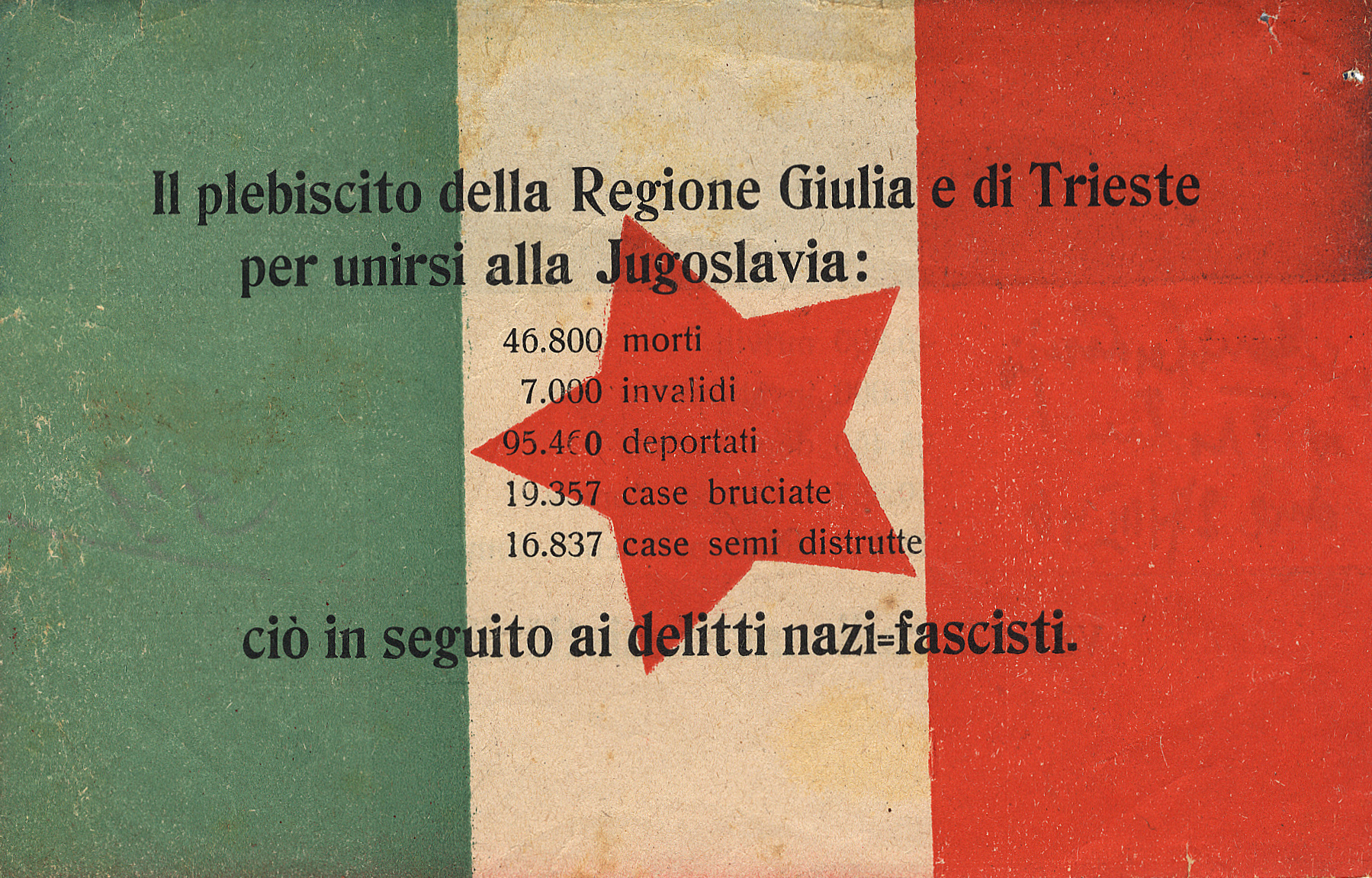 Propaganda flyers calling for the union of the Julian March with Yugoslavia.
Propaganda flyers calling for the union of the Julian March with Yugoslavia.
 Propaganda flyers calling for the union of the Julian March with Yugoslavia.
Propaganda flyers calling for the union of the Julian March with Yugoslavia.
 Basovizza, 6 September 1945 – unveiling of the monument to the “heroes of Basovizza”. This was the first mass demonstration in favour of union with Yugoslavia and drew around 150,000 people.
Basovizza, 6 September 1945 – unveiling of the monument to the “heroes of Basovizza”. This was the first mass demonstration in favour of union with Yugoslavia and drew around 150,000 people.
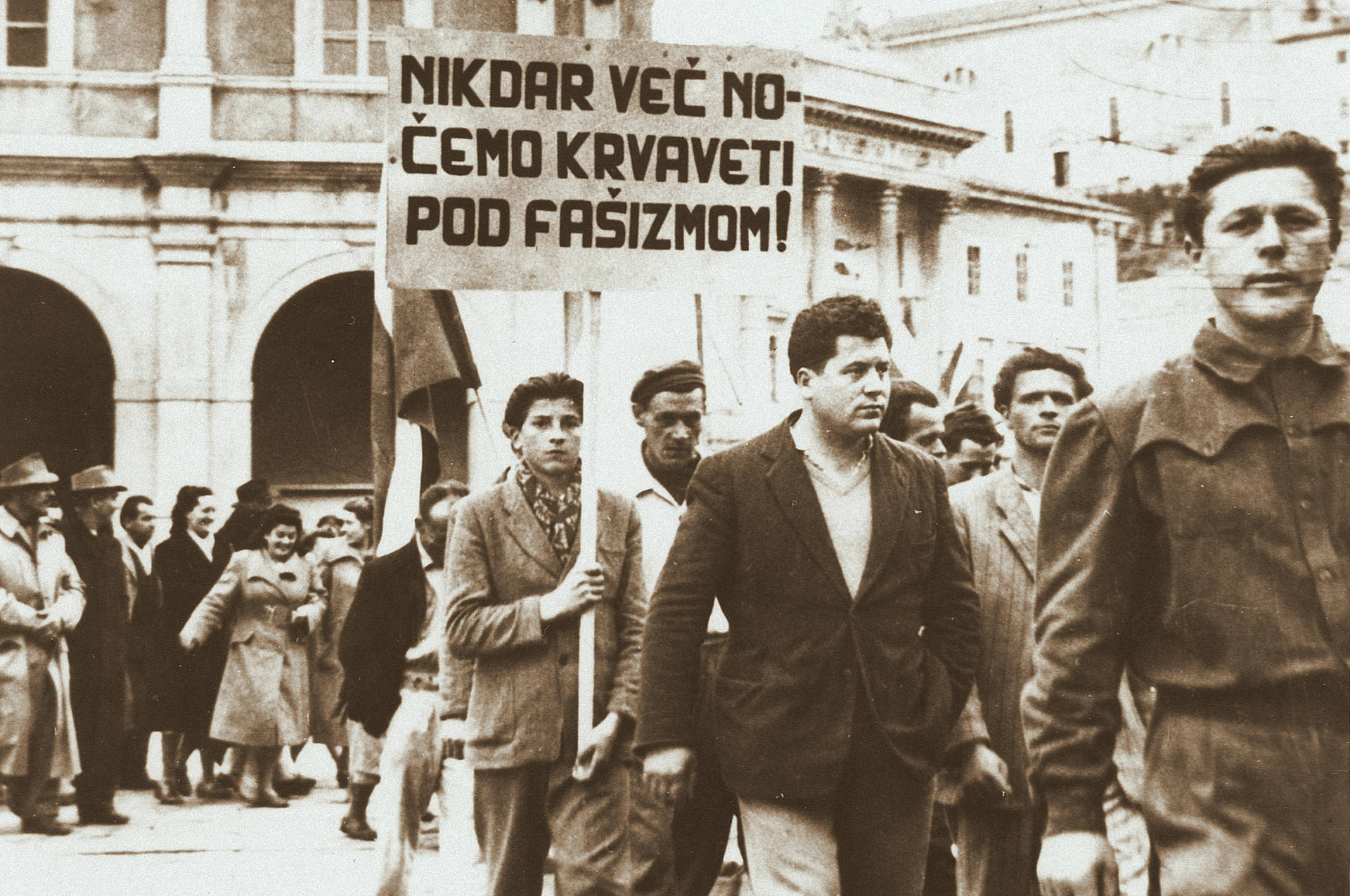 Piran.
Piran.
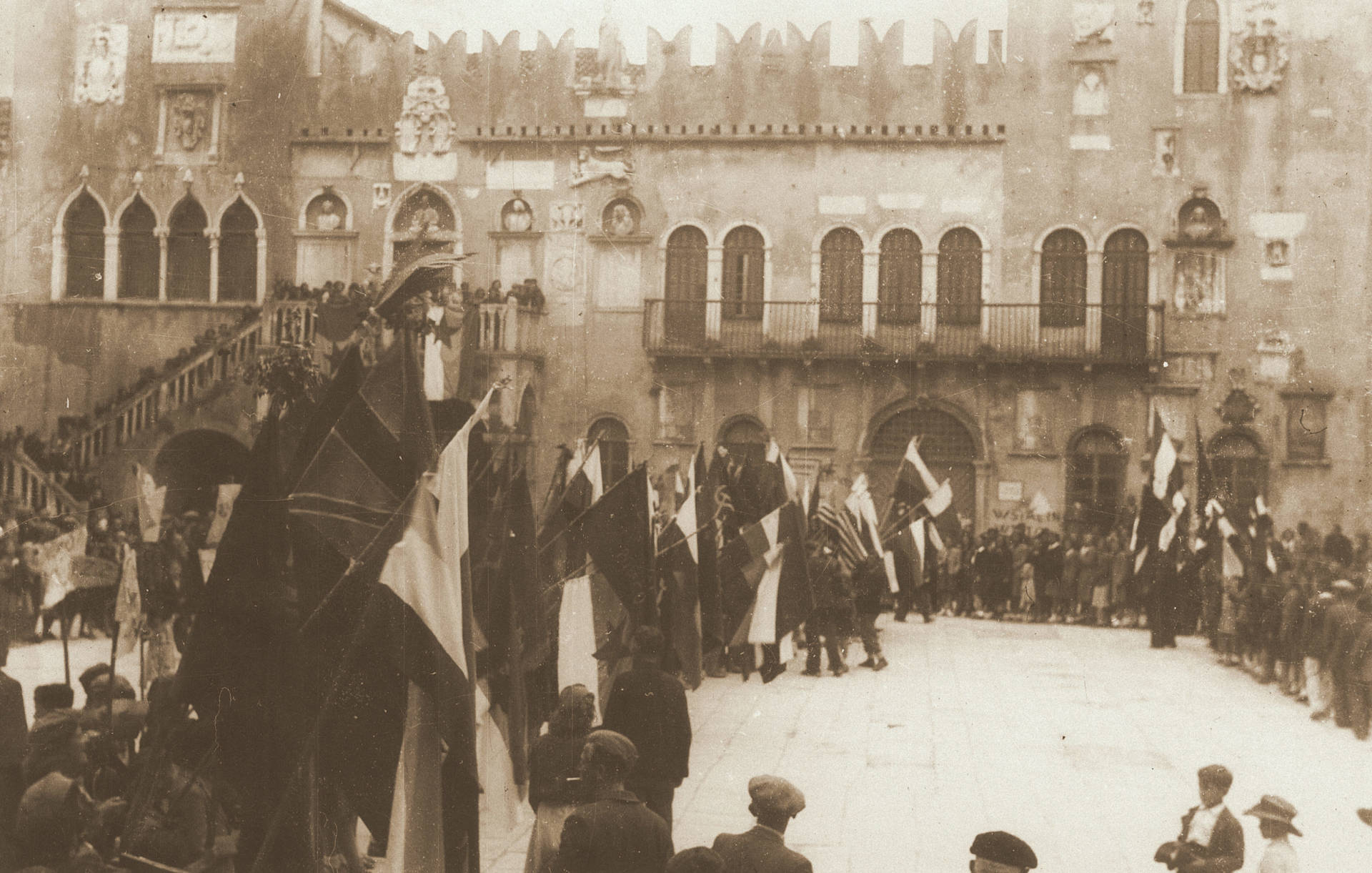 Koper, 23 March 1946 – arrival of the international demarcation commission.
Koper, 23 March 1946 – arrival of the international demarcation commission.
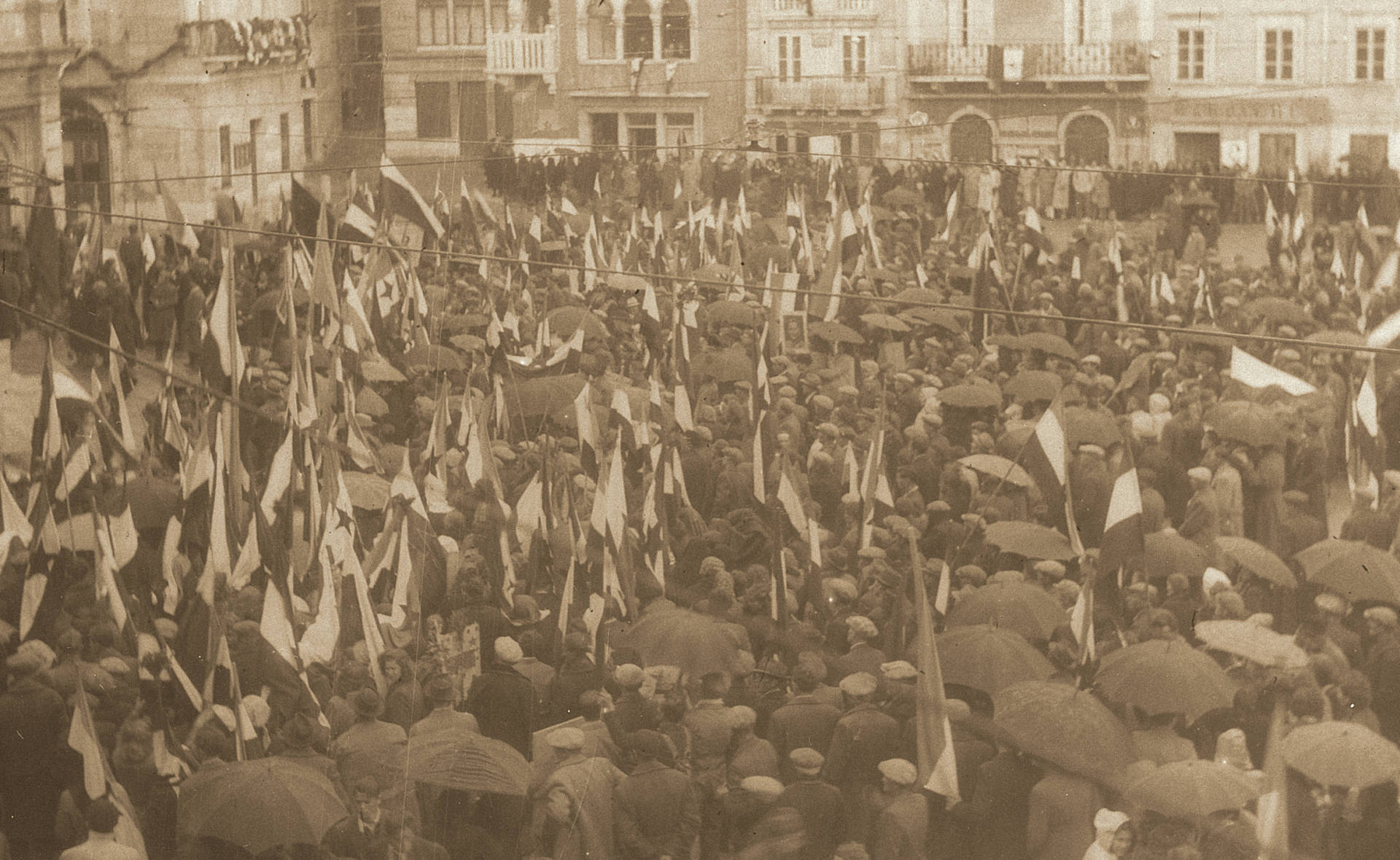 Piran, 3 March 1946 – demonstration in favour of union with Yugoslavia.
Piran, 3 March 1946 – demonstration in favour of union with Yugoslavia.
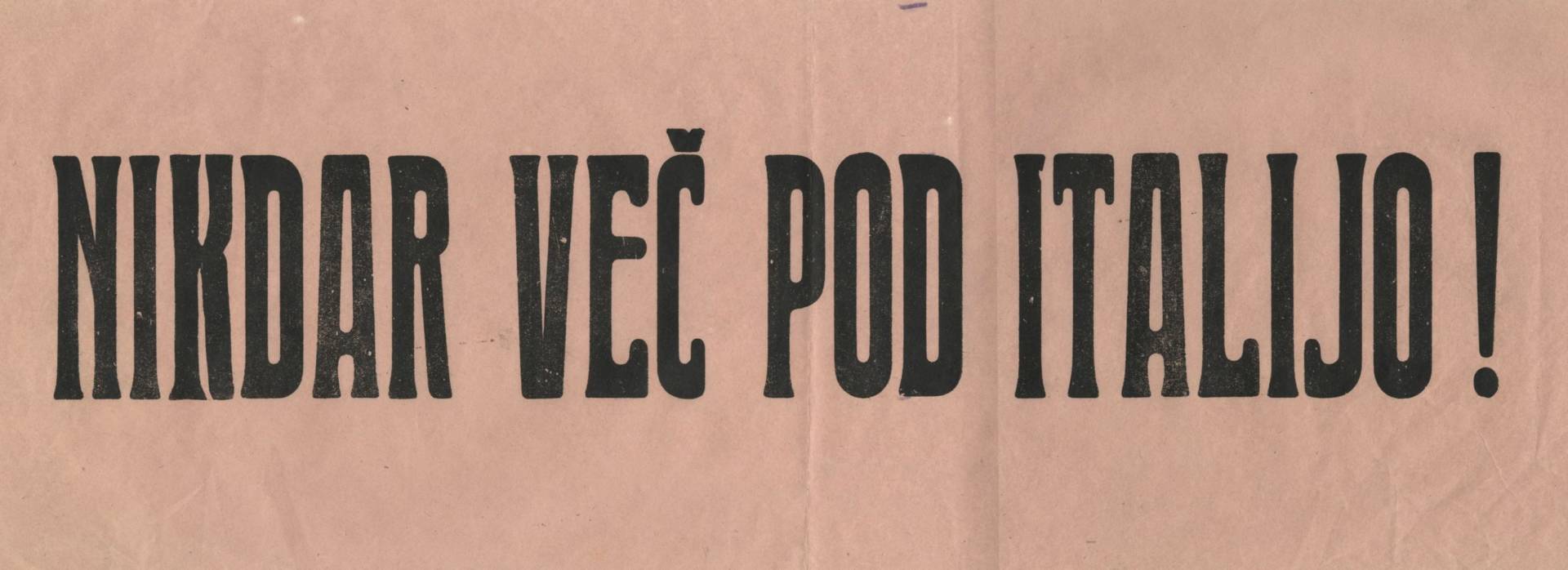 Koper, 23 March 1946 – arrival of the international demarcation commission.
Koper, 23 March 1946 – arrival of the international demarcation commission.
 Careful preparations were made for the arrival of the demarcation commission in the Julian March. Villages were decorated with triumphal arches. Banners on houses, walls and bridges expressed the will of the populace and hailed those who had suffered and died for the sake of freedom. The members of the commission were greeted by crowds of people lining the roads everywhere they went.
Careful preparations were made for the arrival of the demarcation commission in the Julian March. Villages were decorated with triumphal arches. Banners on houses, walls and bridges expressed the will of the populace and hailed those who had suffered and died for the sake of freedom. The members of the commission were greeted by crowds of people lining the roads everywhere they went.
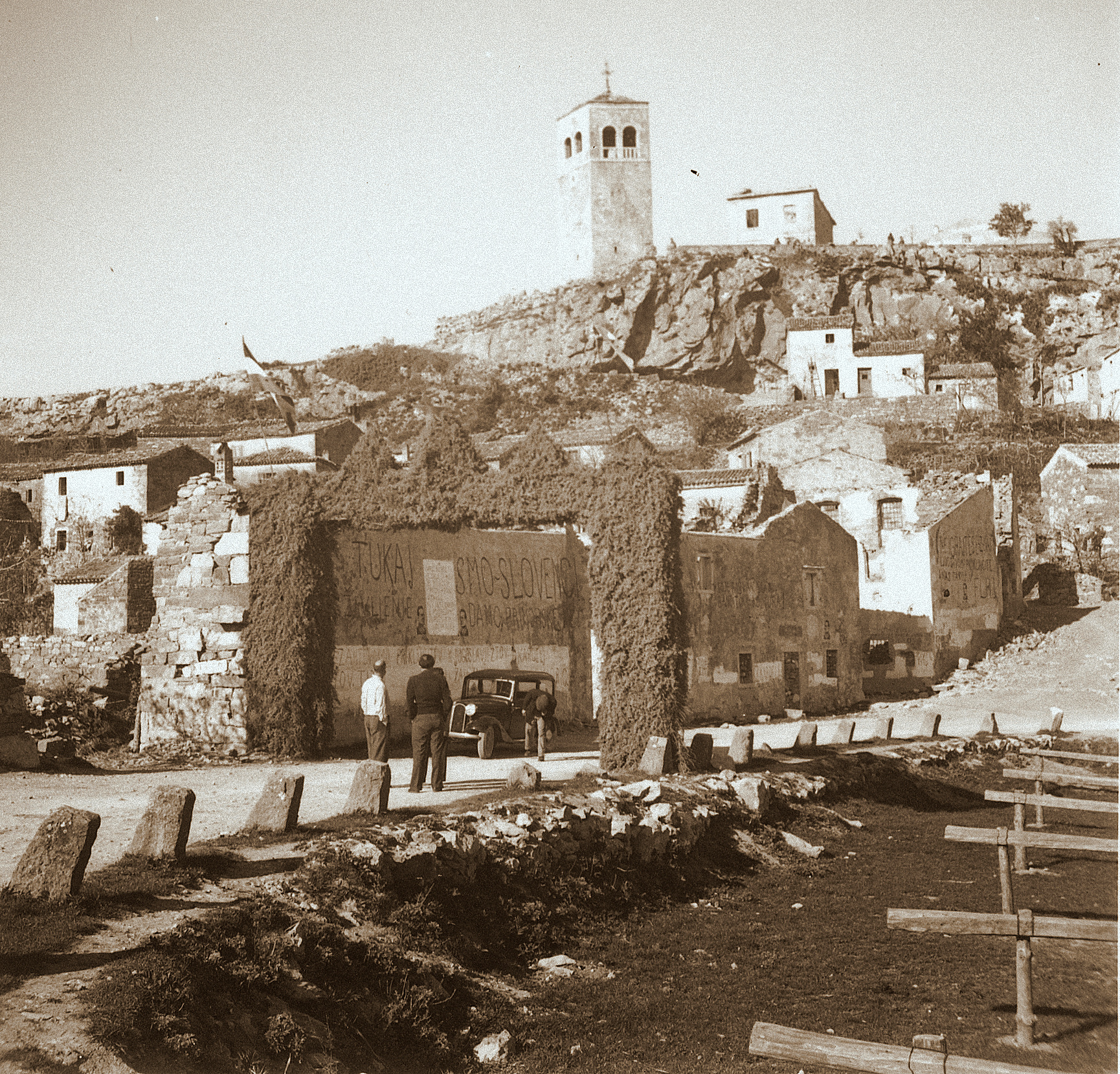 Careful preparations were made for the arrival of the demarcation commission in the Julian March. Villages were decorated with triumphal arches. Banners on houses, walls and bridges expressed the will of the populace and hailed those who had suffered and died for the sake of freedom. The members of the commission were greeted by crowds of people lining the roads everywhere they went.
Careful preparations were made for the arrival of the demarcation commission in the Julian March. Villages were decorated with triumphal arches. Banners on houses, walls and bridges expressed the will of the populace and hailed those who had suffered and died for the sake of freedom. The members of the commission were greeted by crowds of people lining the roads everywhere they went.
 Careful preparations were made for the arrival of the demarcation commission in the Julian March. Villages were decorated with triumphal arches. Banners on houses, walls and bridges expressed the will of the populace and hailed those who had suffered and died for the sake of freedom. The members of the commission were greeted by crowds of people lining the roads everywhere they went.
Careful preparations were made for the arrival of the demarcation commission in the Julian March. Villages were decorated with triumphal arches. Banners on houses, walls and bridges expressed the will of the populace and hailed those who had suffered and died for the sake of freedom. The members of the commission were greeted by crowds of people lining the roads everywhere they went.
 Thousands of resolutions of a variety of forms and formulations were sent by individuals and organisations from the Julian March, Slovenia and Yugoslavia with demands for a fair border. They were sent to a variety of recipients, although most were addressed to Edvard Kardelj, the head of the Yugoslav delegation at the peace conference, and contained messages of support and thanks.
Thousands of resolutions of a variety of forms and formulations were sent by individuals and organisations from the Julian March, Slovenia and Yugoslavia with demands for a fair border. They were sent to a variety of recipients, although most were addressed to Edvard Kardelj, the head of the Yugoslav delegation at the peace conference, and contained messages of support and thanks.
 Thousands of resolutions of a variety of forms and formulations were sent by individuals and organisations from the Julian March, Slovenia and Yugoslavia with demands for a fair border. They were sent to a variety of recipients, although most were addressed to Edvard Kardelj, the head of the Yugoslav delegation at the peace conference, and contained messages of support and thanks.
Thousands of resolutions of a variety of forms and formulations were sent by individuals and organisations from the Julian March, Slovenia and Yugoslavia with demands for a fair border. They were sent to a variety of recipients, although most were addressed to Edvard Kardelj, the head of the Yugoslav delegation at the peace conference, and contained messages of support and thanks.
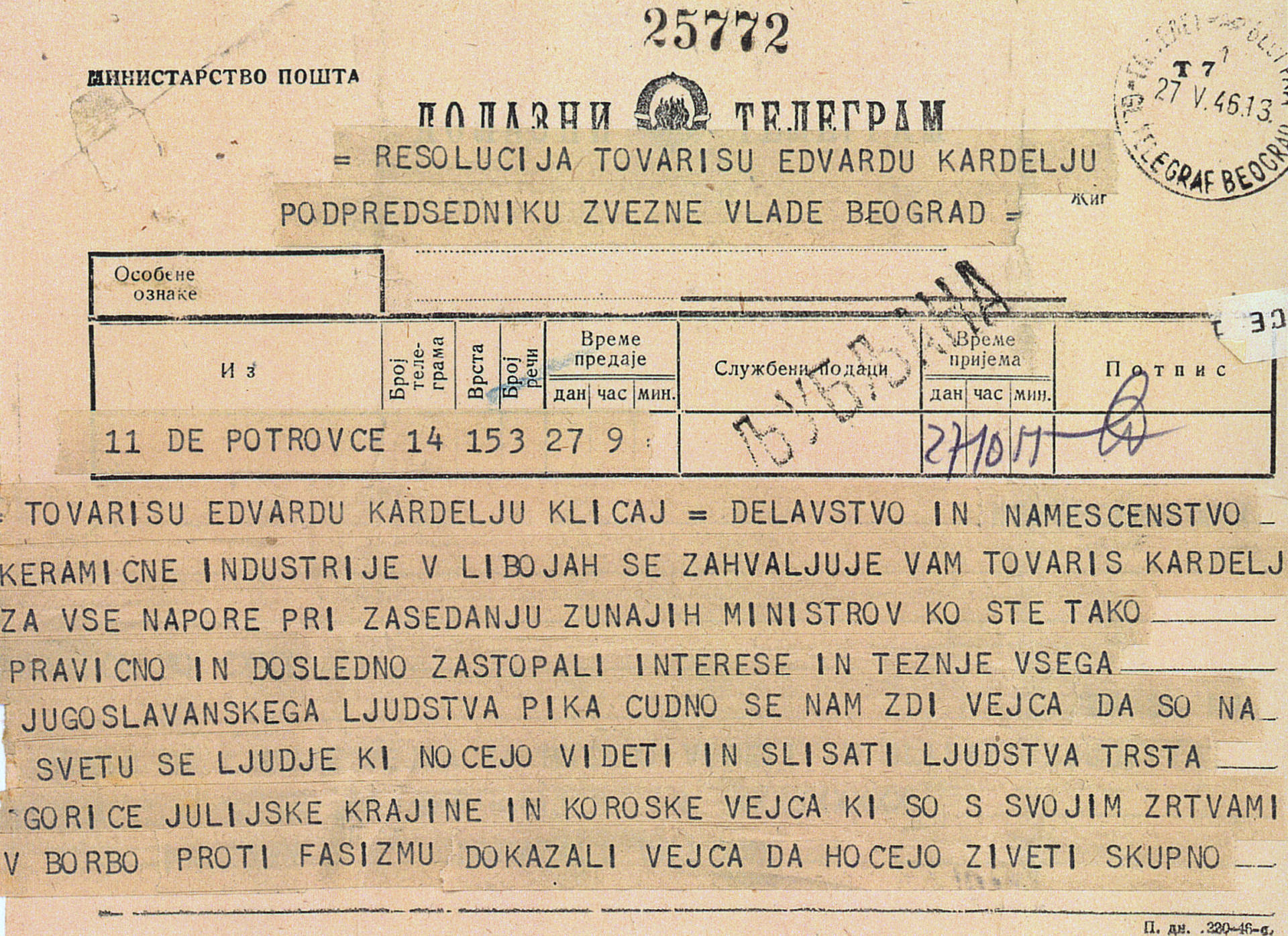 Thousands of resolutions of a variety of forms and formulations were sent by individuals and organisations from the Julian March, Slovenia and Yugoslavia with demands for a fair border. They were sent to a variety of recipients, although most were addressed to Edvard Kardelj, the head of the Yugoslav delegation at the peace conference, and contained messages of support and thanks.
Thousands of resolutions of a variety of forms and formulations were sent by individuals and organisations from the Julian March, Slovenia and Yugoslavia with demands for a fair border. They were sent to a variety of recipients, although most were addressed to Edvard Kardelj, the head of the Yugoslav delegation at the peace conference, and contained messages of support and thanks.
 The inhabitants of Osp on their way to Črni Kal for a rally in favour of union with Yugoslavia.
The inhabitants of Osp on their way to Črni Kal for a rally in favour of union with Yugoslavia.
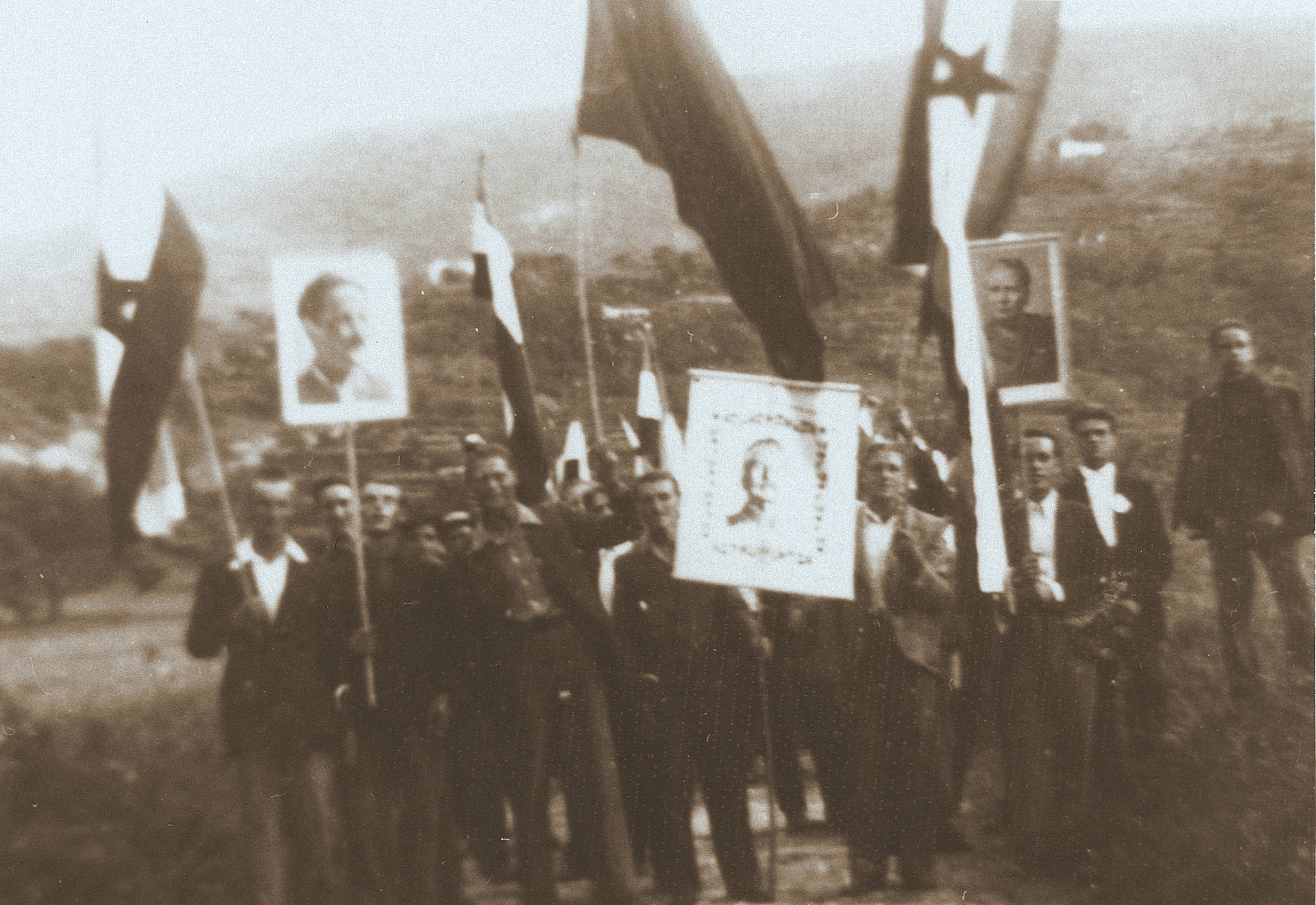 Pomjan, 7 March 1946 – villagers on their way to a rally organised to coincide with the arrival of the demarcation commission.
Pomjan, 7 March 1946 – villagers on their way to a rally organised to coincide with the arrival of the demarcation commission.
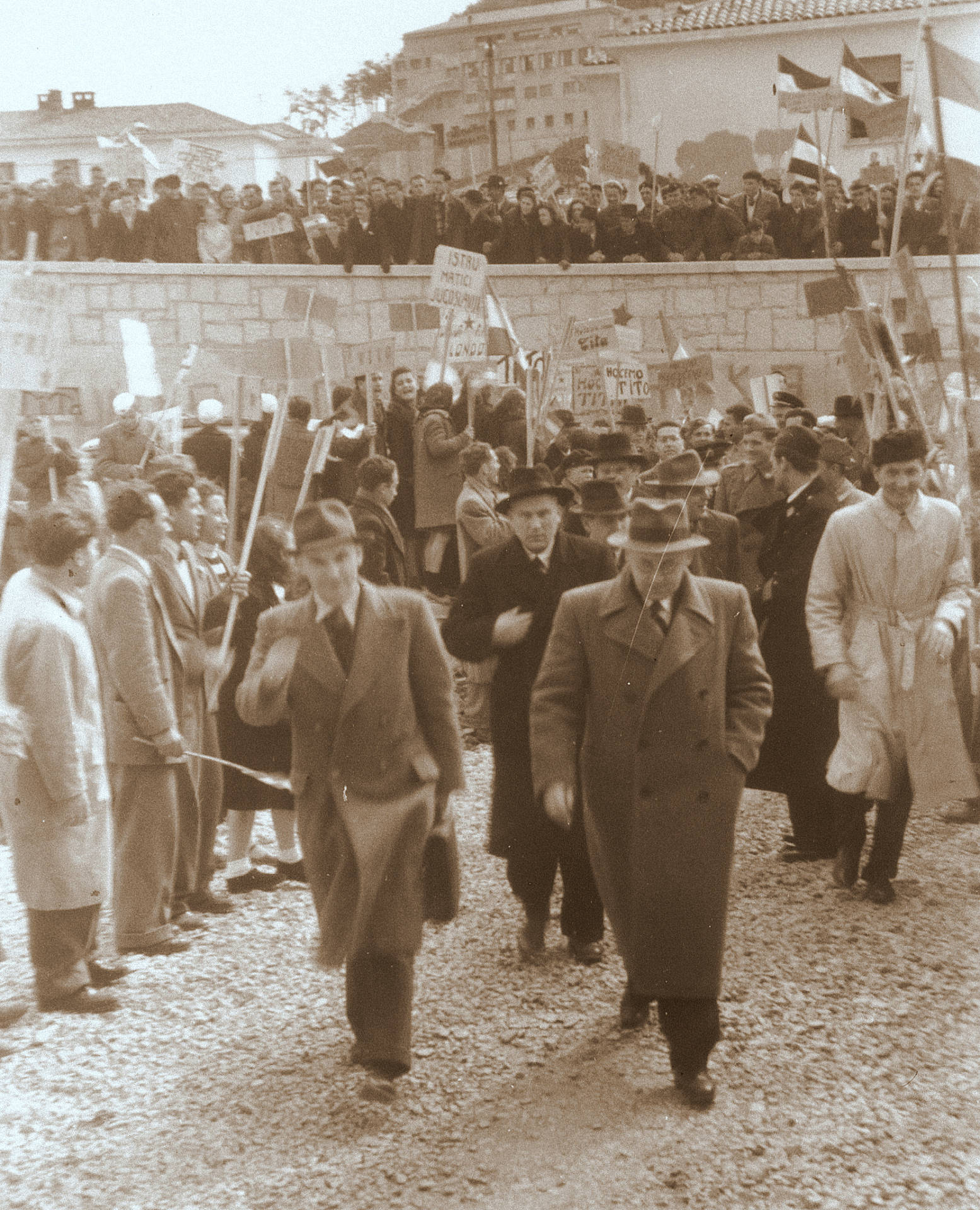 Podlabin, 15 March 1946 – members of the demarcation commission during a visit.
Podlabin, 15 March 1946 – members of the demarcation commission during a visit.

 The Yugoslav delegation set off from Ljubljana to the Paris Peace Conference on 25 July 1946. A large crowd gathered at the railway station to bid the delegation farewell.
The Yugoslav delegation set off from Ljubljana to the Paris Peace Conference on 25 July 1946. A large crowd gathered at the railway station to bid the delegation farewell.
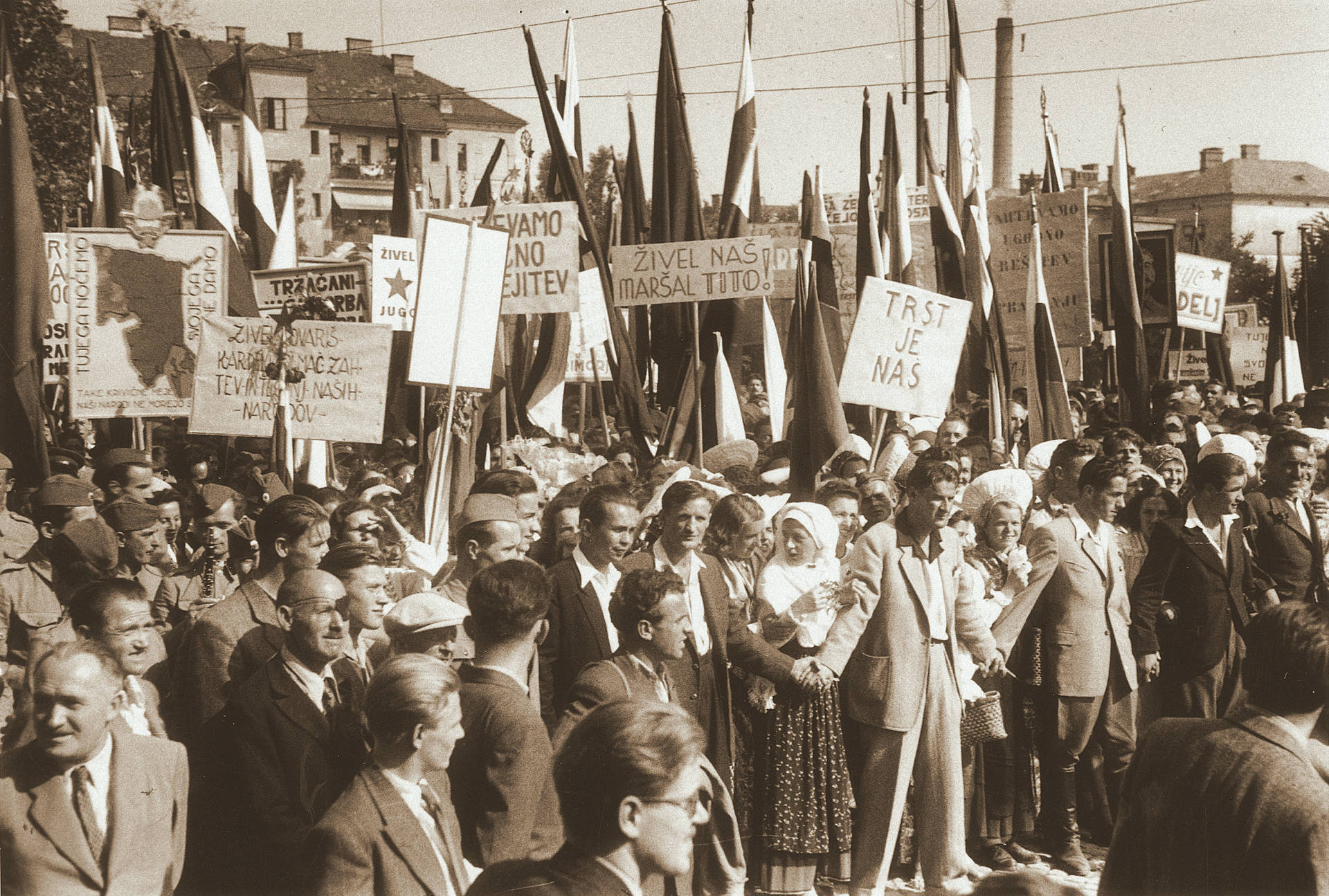 The Yugoslav delegation set off from Ljubljana to the Paris Peace Conference on 25 July 1946. A large crowd gathered at the railway station to bid the delegation farewell.
The Yugoslav delegation set off from Ljubljana to the Paris Peace Conference on 25 July 1946. A large crowd gathered at the railway station to bid the delegation farewell.
 The Yugoslav delegation set off from Ljubljana to the Paris Peace Conference on 25 July 1946. A large crowd gathered at the railway station to bid the delegation farewell.
The Yugoslav delegation set off from Ljubljana to the Paris Peace Conference on 25 July 1946. A large crowd gathered at the railway station to bid the delegation farewell.
 The Yugoslav delegation set off from Ljubljana to the Paris Peace Conference on 25 July 1946. A large crowd gathered at the railway station to bid the delegation farewell.
The Yugoslav delegation set off from Ljubljana to the Paris Peace Conference on 25 July 1946. A large crowd gathered at the railway station to bid the delegation farewell.
 The members of the Yugoslav delegation at the peace conference. The Slovene representatives: head of delegation Edvard Kardelj (front row, third from the left), Joža Vilfan (second row, far left) and Aleš Bebler (second row, far right).
The members of the Yugoslav delegation at the peace conference. The Slovene representatives: head of delegation Edvard Kardelj (front row, third from the left), Joža Vilfan (second row, far left) and Aleš Bebler (second row, far right).
 Opening ceremony of the Paris Peace Conference at the Palais du Luxembourg.
Opening ceremony of the Paris Peace Conference at the Palais du Luxembourg.
 Ethnic map from the material prepared for the international demarcation commission.
Ethnic map from the material prepared for the international demarcation commission.
 The Yugoslav delegation during a session of the Paris Peace Conference.
The Yugoslav delegation during a session of the Paris Peace Conference.
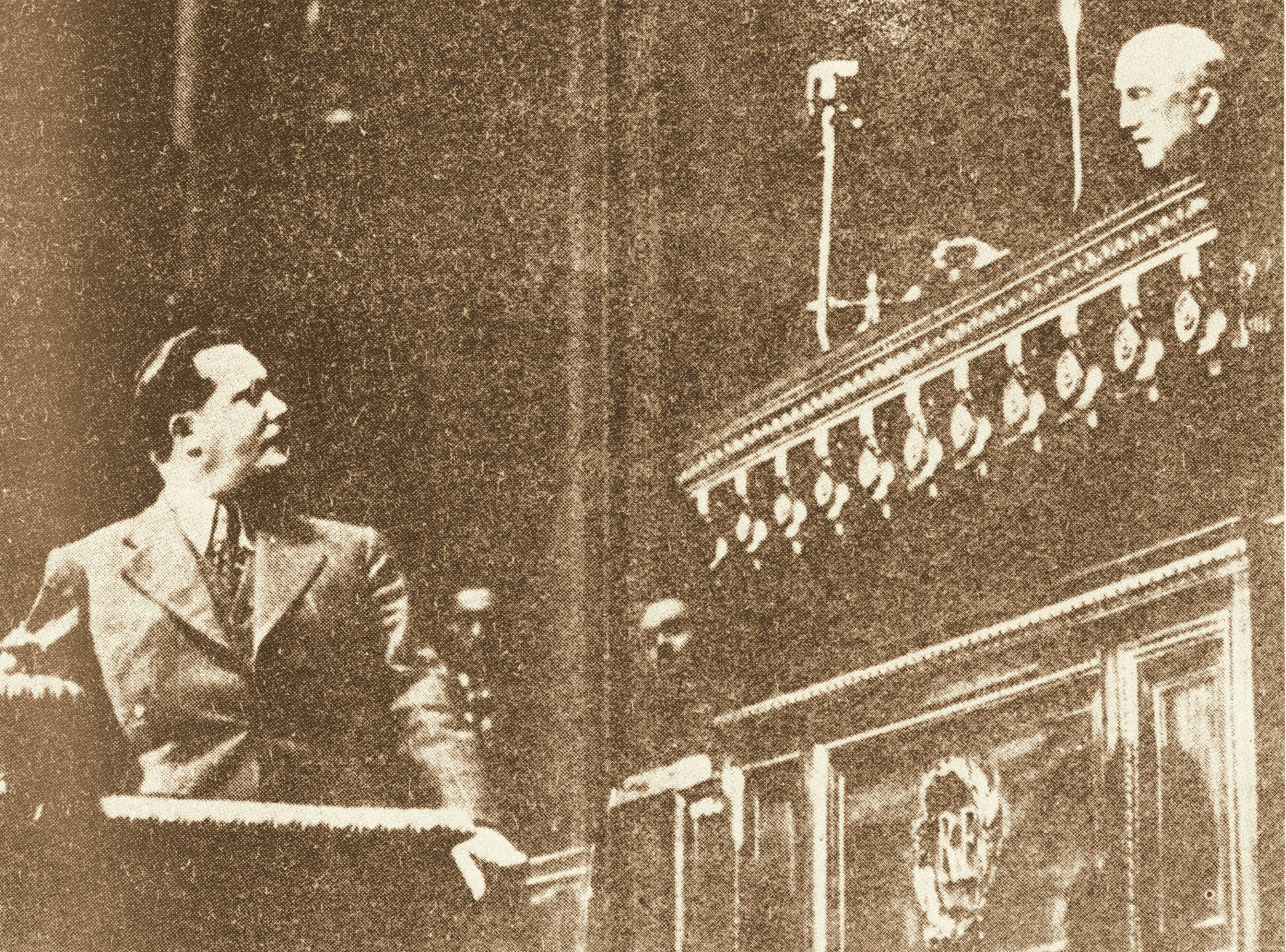 Edvard Kardelj speaking at plenary session of the Paris Peace Conference.
Edvard Kardelj speaking at plenary session of the Paris Peace Conference.
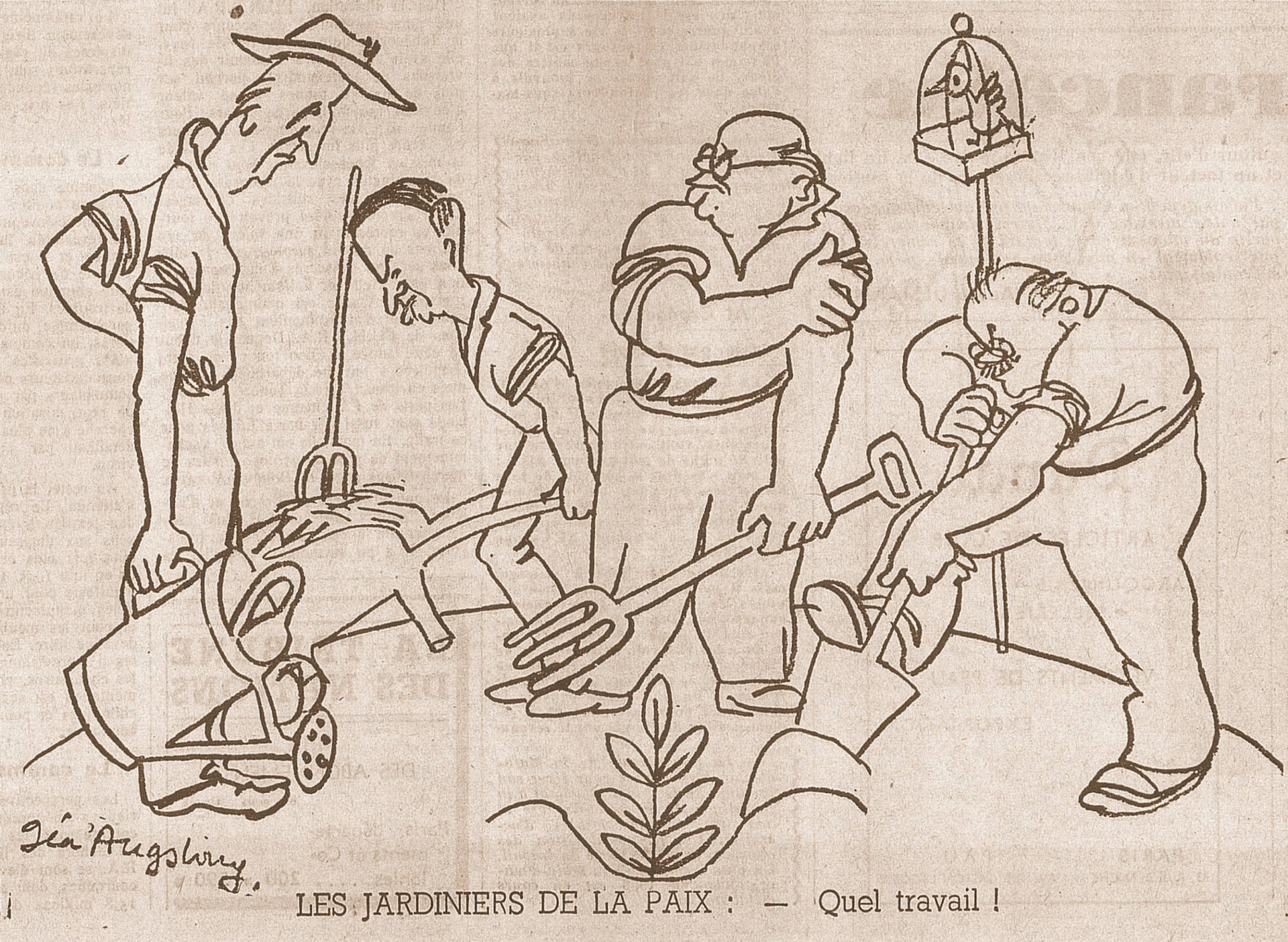 Caricature of the four foreign ministers from French newspaper La tribune des Nations. L–R: Byrnes (USA), Bidault (France), Bevin (Great Britain) and Molotov (Soviet Union).
Caricature of the four foreign ministers from French newspaper La tribune des Nations. L–R: Byrnes (USA), Bidault (France), Bevin (Great Britain) and Molotov (Soviet Union).
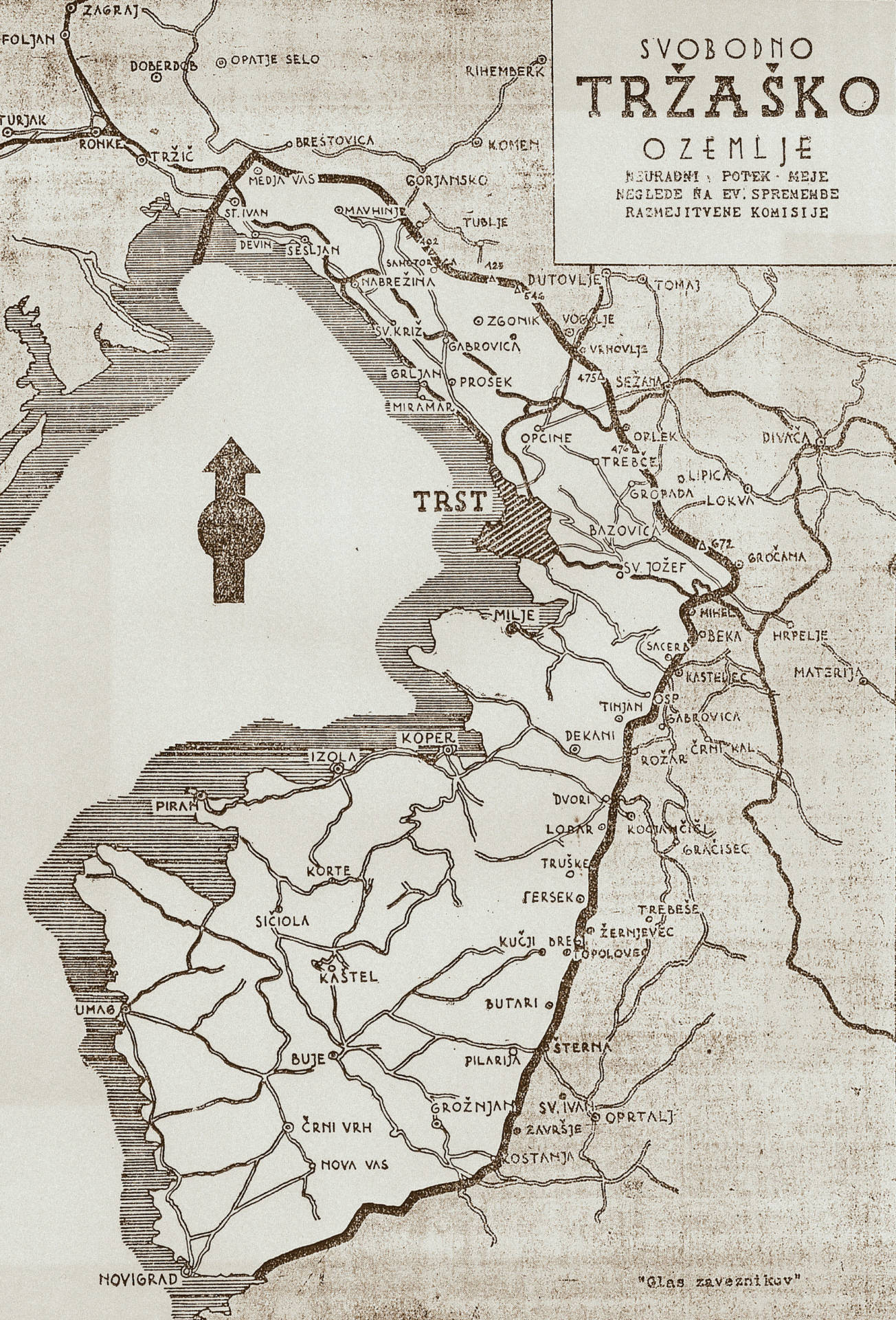 Glas zaveznikov, 18 February 1947. The newspaper of the Allied Information Service published this map of the new state.
Glas zaveznikov, 18 February 1947. The newspaper of the Allied Information Service published this map of the new state.
 Ilirska Bistrica, 15 September 1947 – celebration of the region’s incorporation into Yugoslavia.
Ilirska Bistrica, 15 September 1947 – celebration of the region’s incorporation into Yugoslavia.
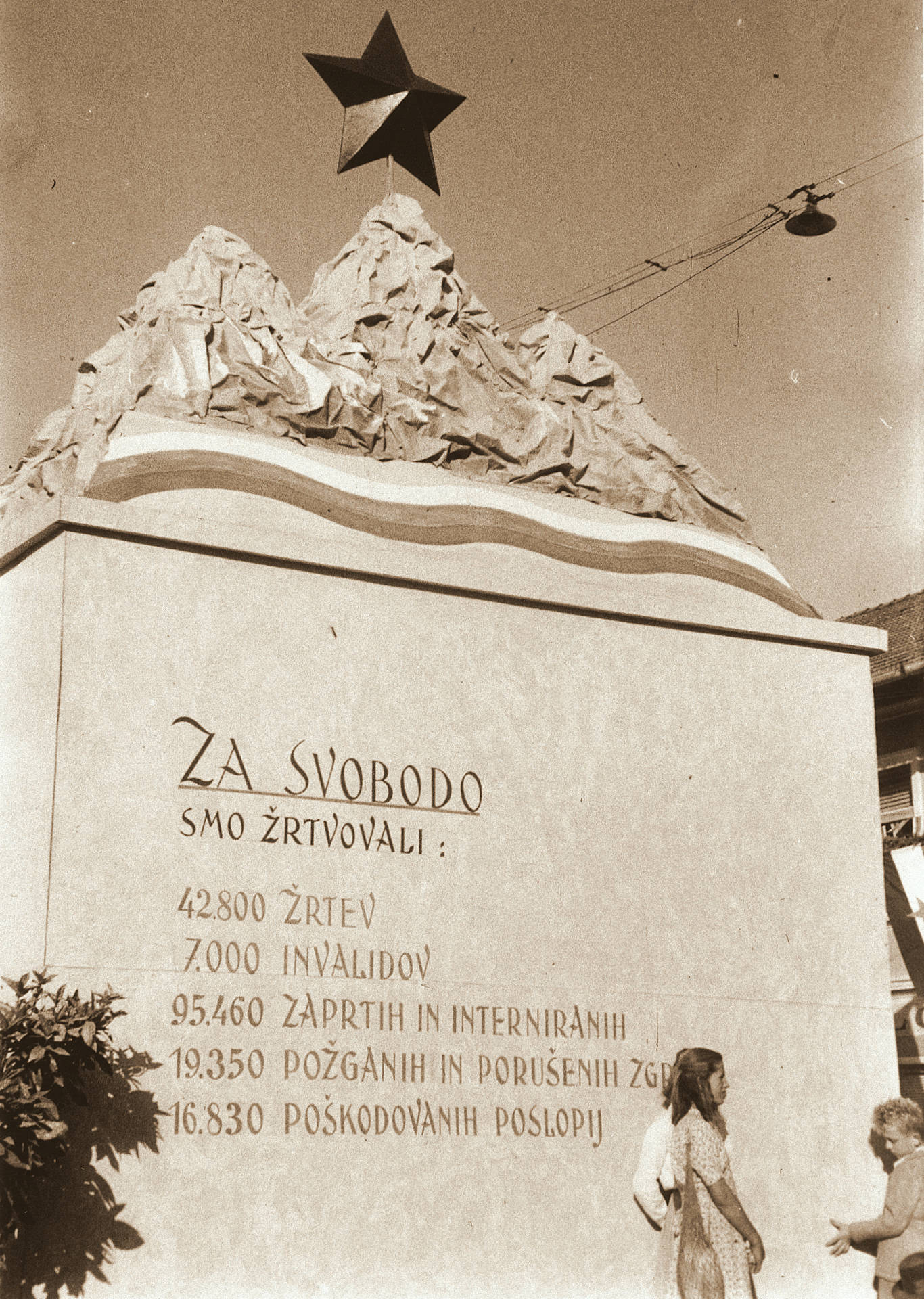 Ilirska Bistrica, 15 September 1947 – celebration of the region’s incorporation into Yugoslavia.
Ilirska Bistrica, 15 September 1947 – celebration of the region’s incorporation into Yugoslavia.
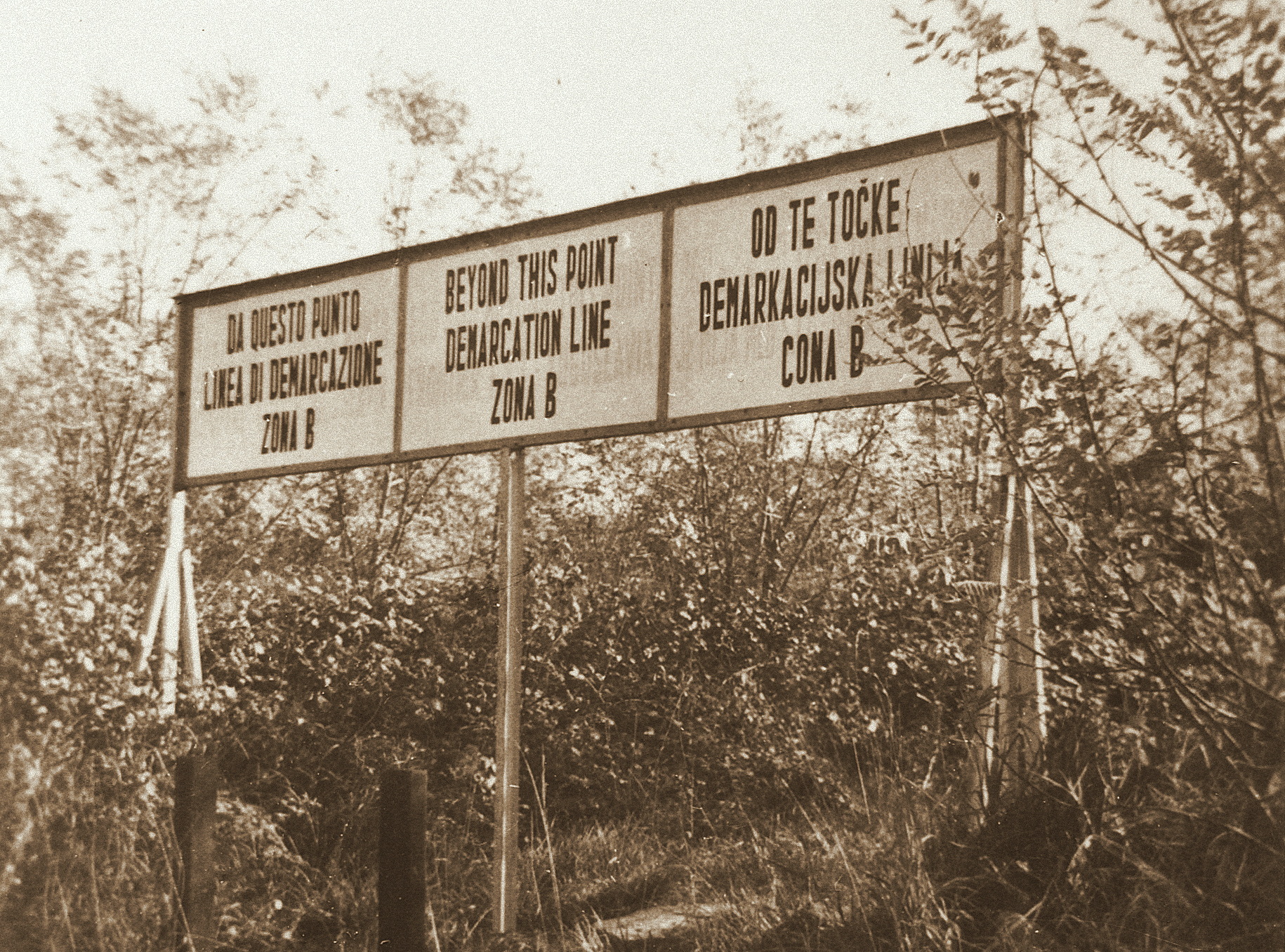 Border sign between the zones of the Free Territory of Trieste below the village of Plavje.
Border sign between the zones of the Free Territory of Trieste below the village of Plavje.

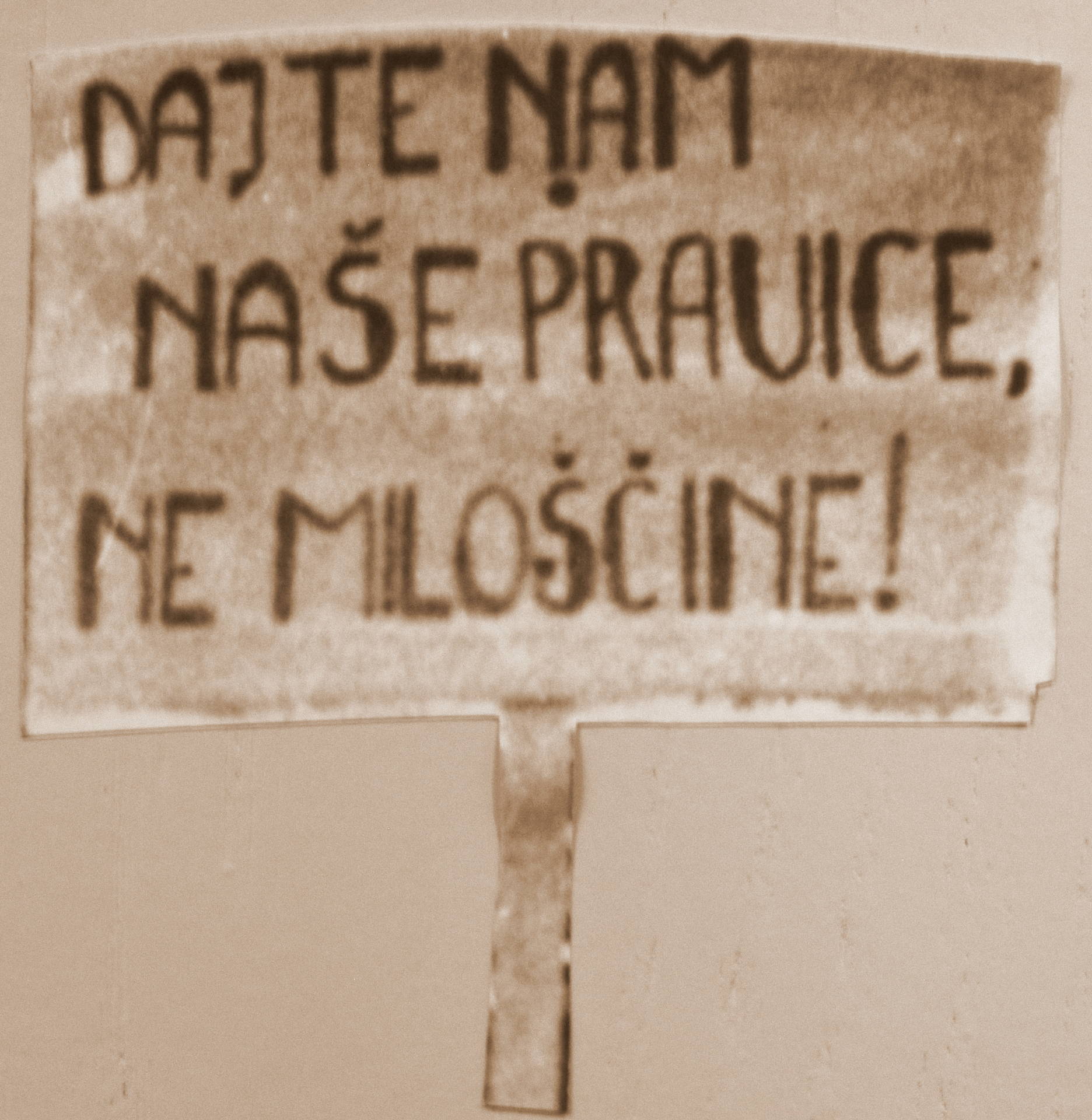
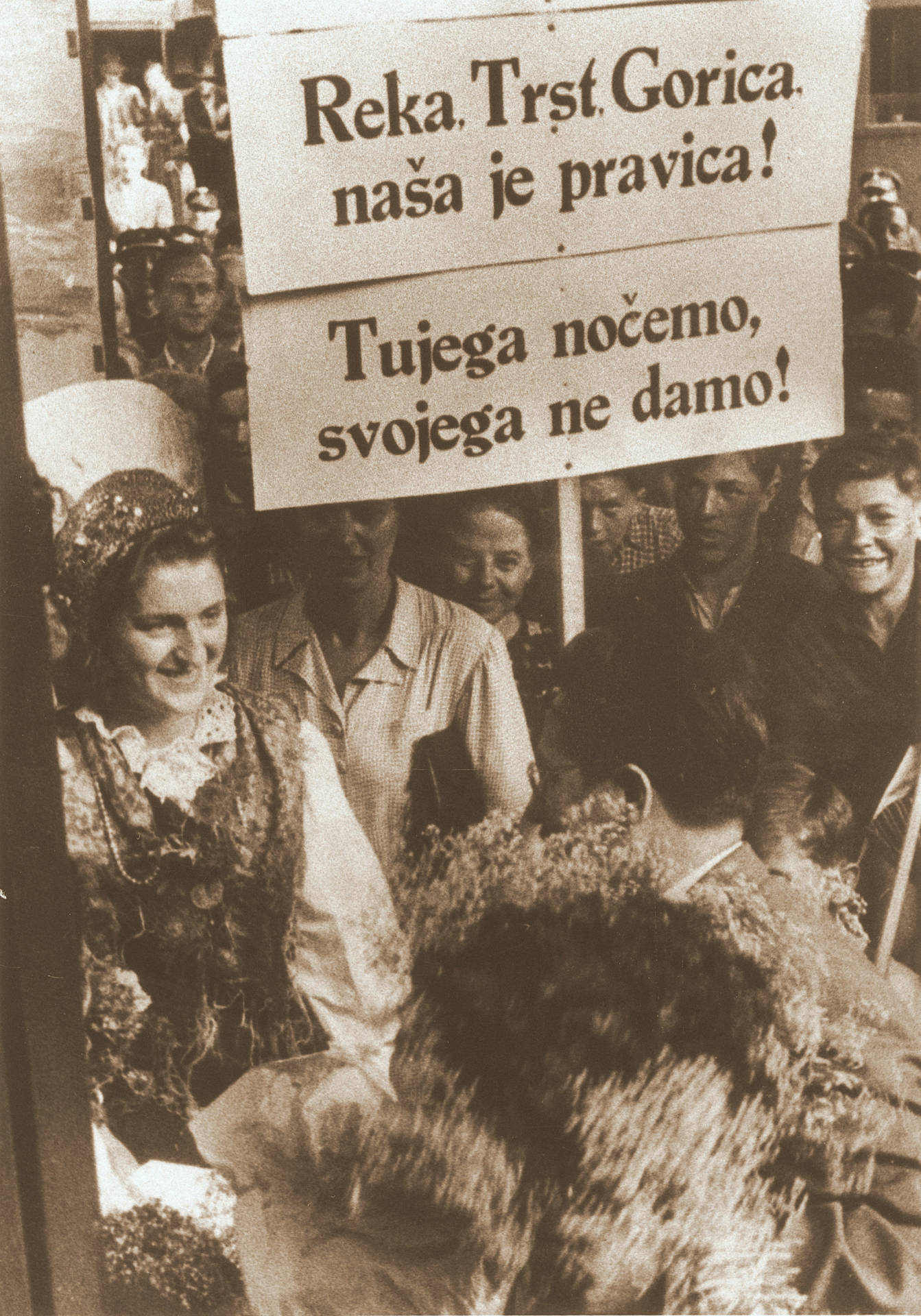

The Free Territory of Trieste (FTT), conceived as a new, independent state entity with its own governor, never truly came into being in this form. It was divided once again between two military governments, which continued to administer it until its dissolution, since a governor was never appointed. As a result, the struggle for this territory continued. In March 1948 three of the great powers signed a triple declaration in favour of the return of the FTT to Italy. Following the Tito–Stalin split, when the Soviet Union broke all ties with Yugoslavia, the FTT lost its strategic importance and the resolution of the triple declaration was never implemented. In the years that followed, the Western Allies increasingly favoured a solution to the so-called Trieste question based on the division of the FTT between the two countries. Negotiations began in 1951. The following year saw the signing of the First London Agreement, under which Italy gained greater influence in Zone A. In Zone B the administrative unit covering the Istrian district was abolished and its competences transferred to the districts of Koper and Buje, which thus created even closer ties with Slovenia and Croatia, respectively. The next year, 1953, was the most critical of all: to begin with Italy began mustering troops on the Yugoslav border, convinced that Yugoslavia wanted to occupy Zone B; then, on 8 October, Great Britain and the USA announced that they were going to cede Zone A to Italy. The Yugoslav government responded swiftly and decisively by closing the border between the two zones, announcing a mobilisation and ordering its army to march into Zone B. Tensions subsided in December when the two countries stood their armies down and the Western Allies prepared a new plan to resolve the Trieste question. The demarcation issue was finally resolved on 5 October 1954 with the signing of the London Memorandum, under which the territory was divided between the two countries along the border separating Zone A and Zone B, with some minor changes in Yugoslavia’s favour.
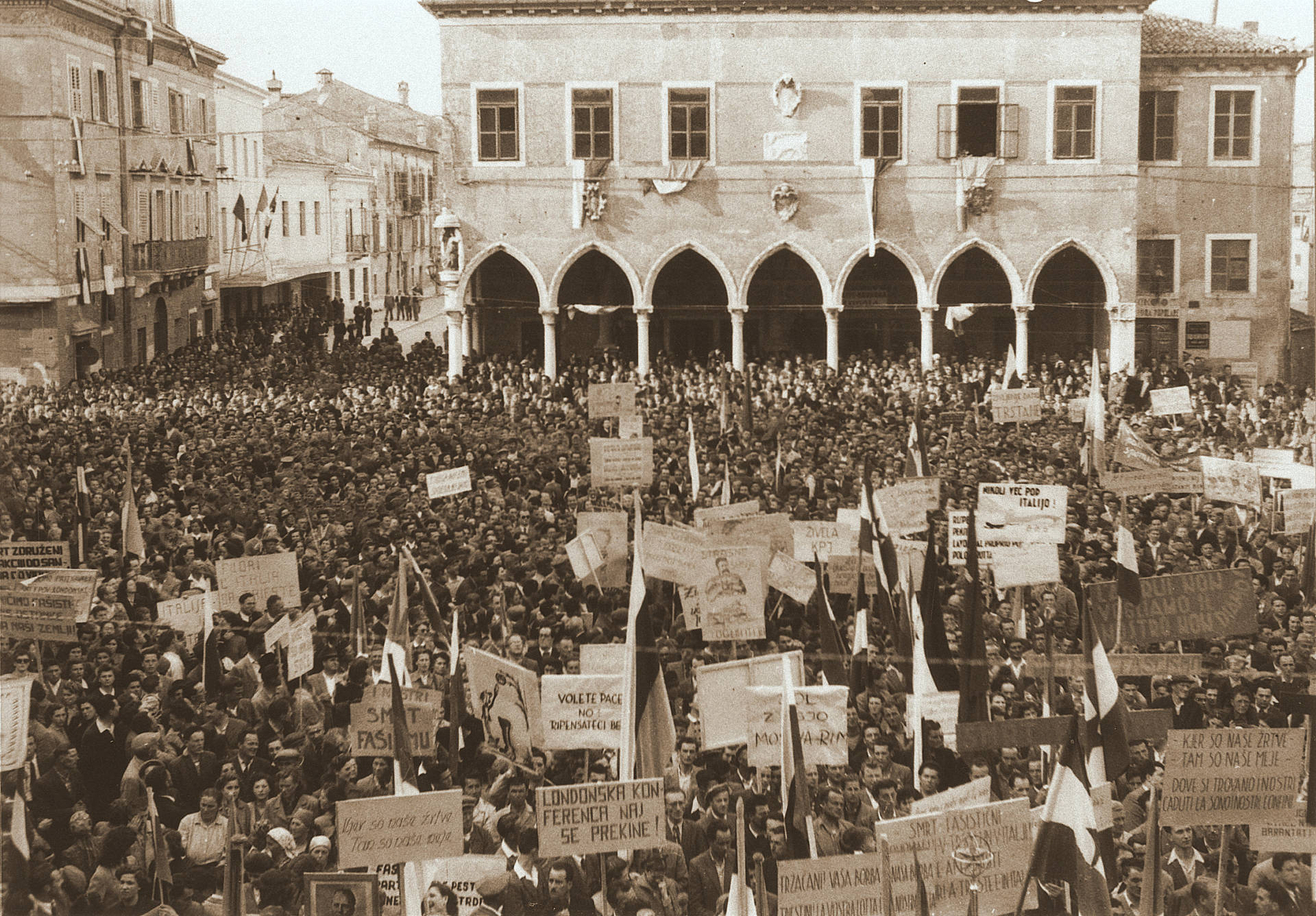 Koper, 17. april 1952.
Koper, 17. april 1952.
 Koper, 28. march 1952.
Koper, 28. march 1952.
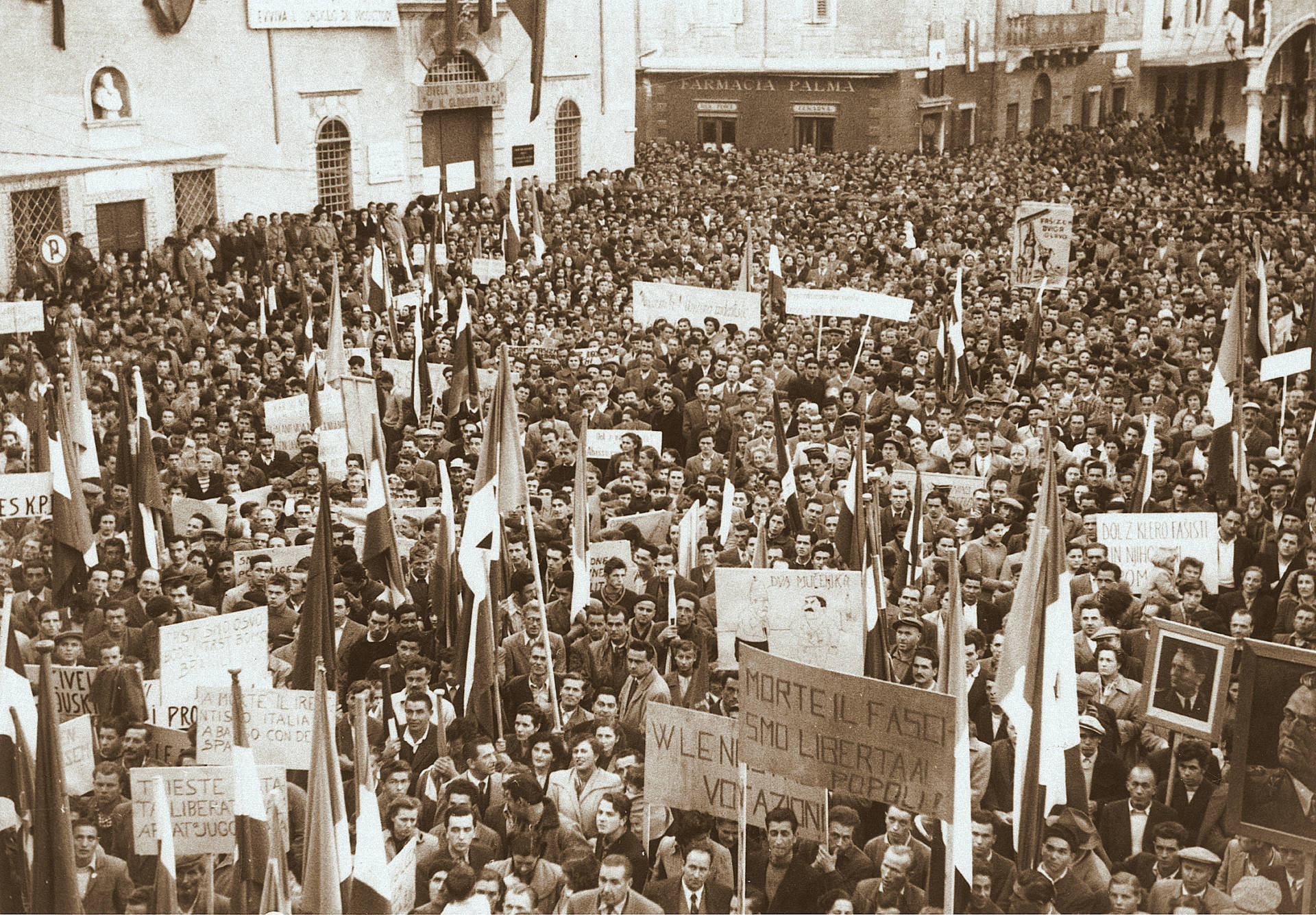 Koper, 5. november 1952.
Koper, 5. november 1952.
 Piran, 10. october 1953.
Piran, 10. october 1953.
 Koper, 17 April 1952.
Koper, 17 April 1952.
 Koper / Capodistria.
Koper / Capodistria.
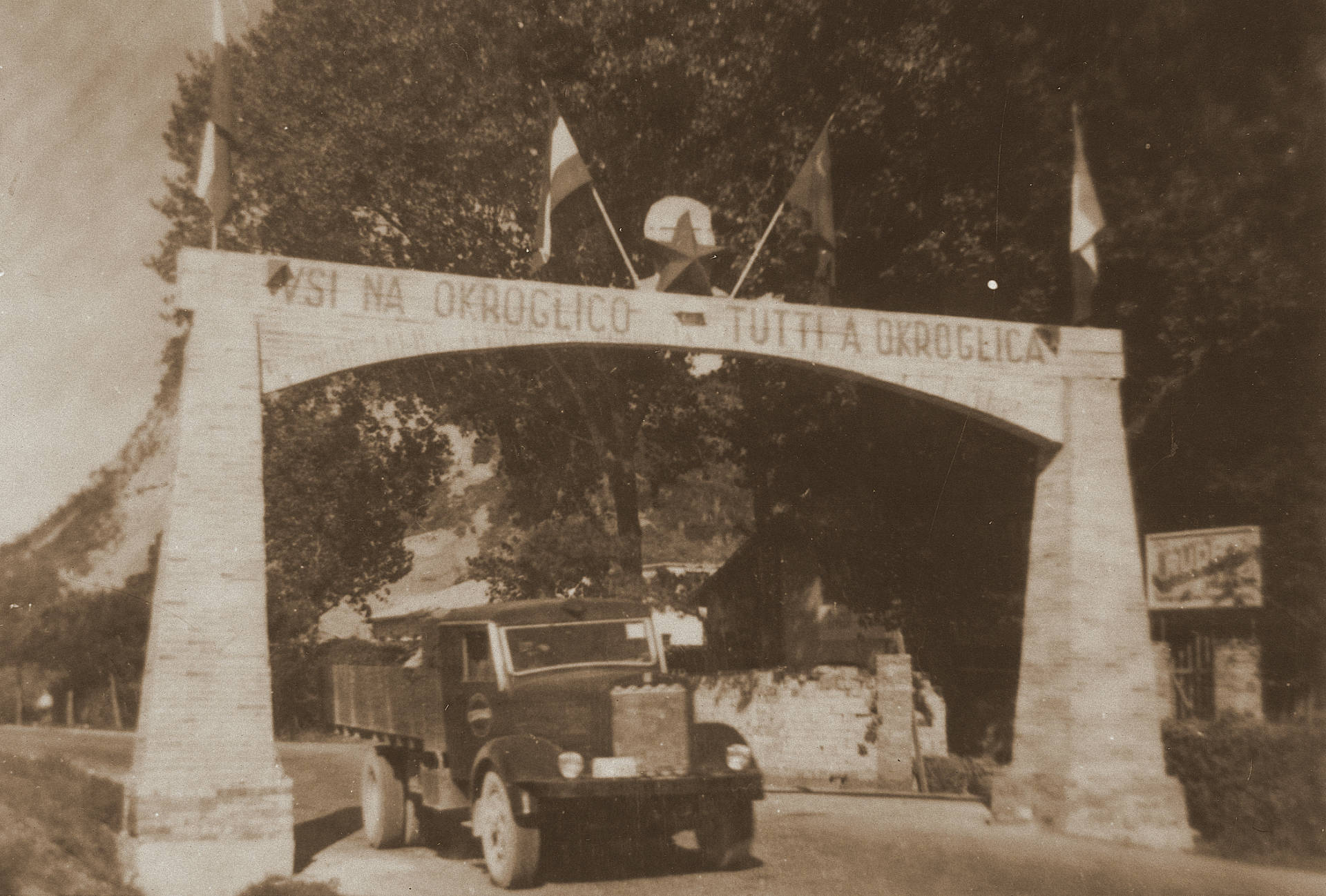 Izola
Izola
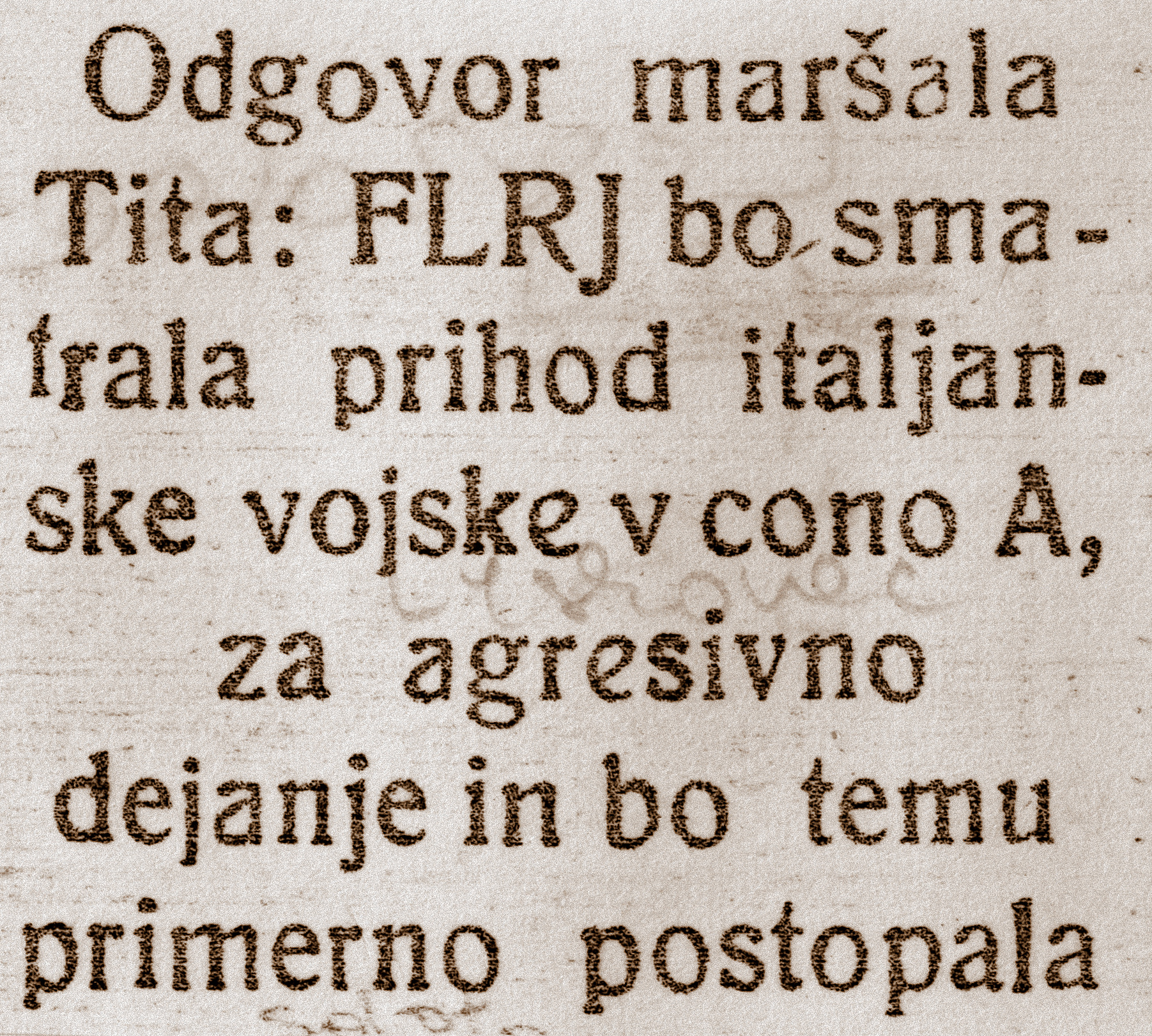 In 1953, the most critical period for the Trieste question, the Yugoslav president Josip Broz Tito spoke about it at rallies throughout Yugoslavia and emphasised that Yugoslavia would no longer make concessions.
In 1953, the most critical period for the Trieste question, the Yugoslav president Josip Broz Tito spoke about it at rallies throughout Yugoslavia and emphasised that Yugoslavia would no longer make concessions.
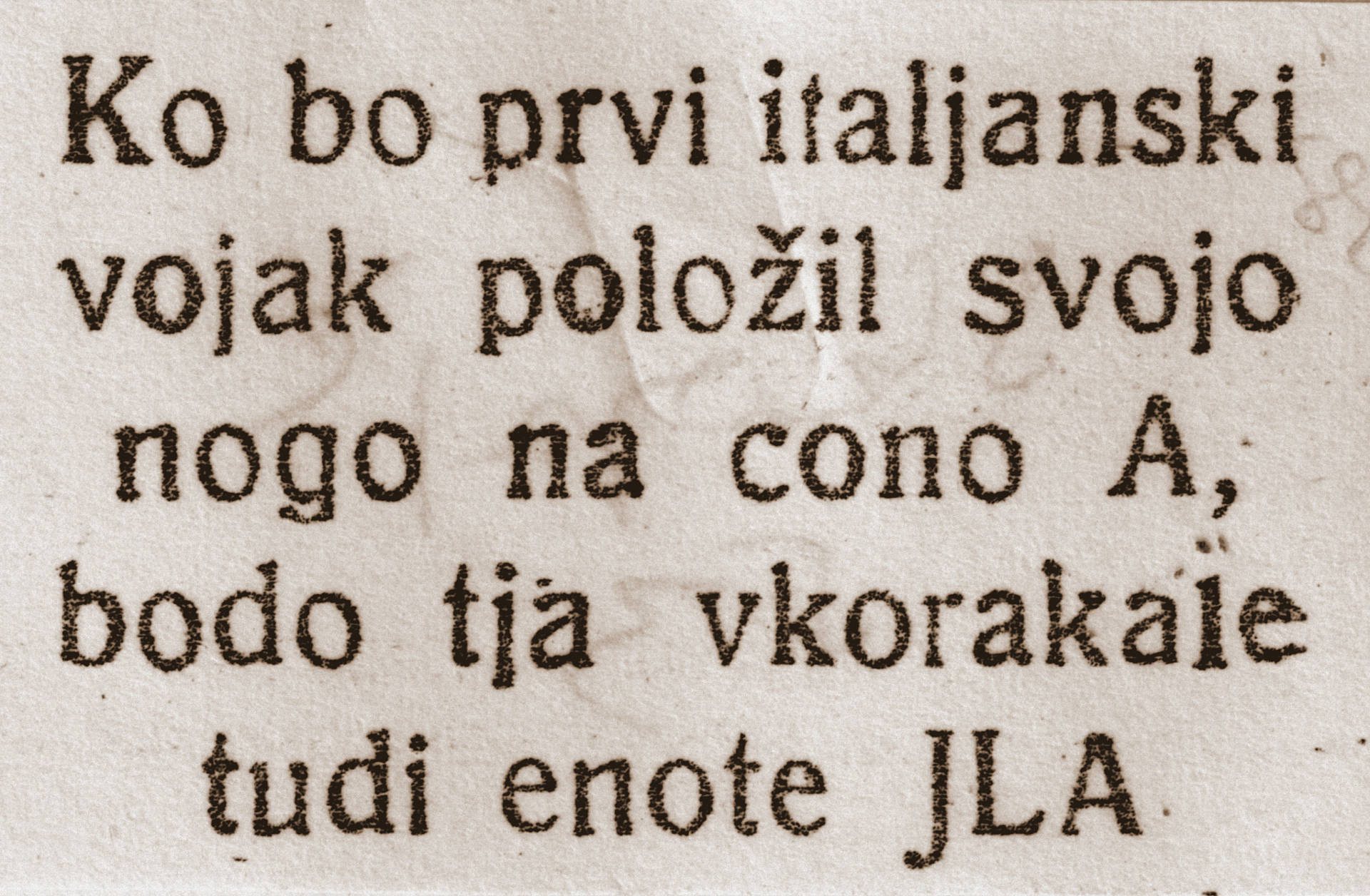 In 1953, the most critical period for the Trieste question, the Yugoslav president Josip Broz Tito spoke about it at rallies throughout Yugoslavia and emphasised that Yugoslavia would no longer make concessions.
In 1953, the most critical period for the Trieste question, the Yugoslav president Josip Broz Tito spoke about it at rallies throughout Yugoslavia and emphasised that Yugoslavia would no longer make concessions.
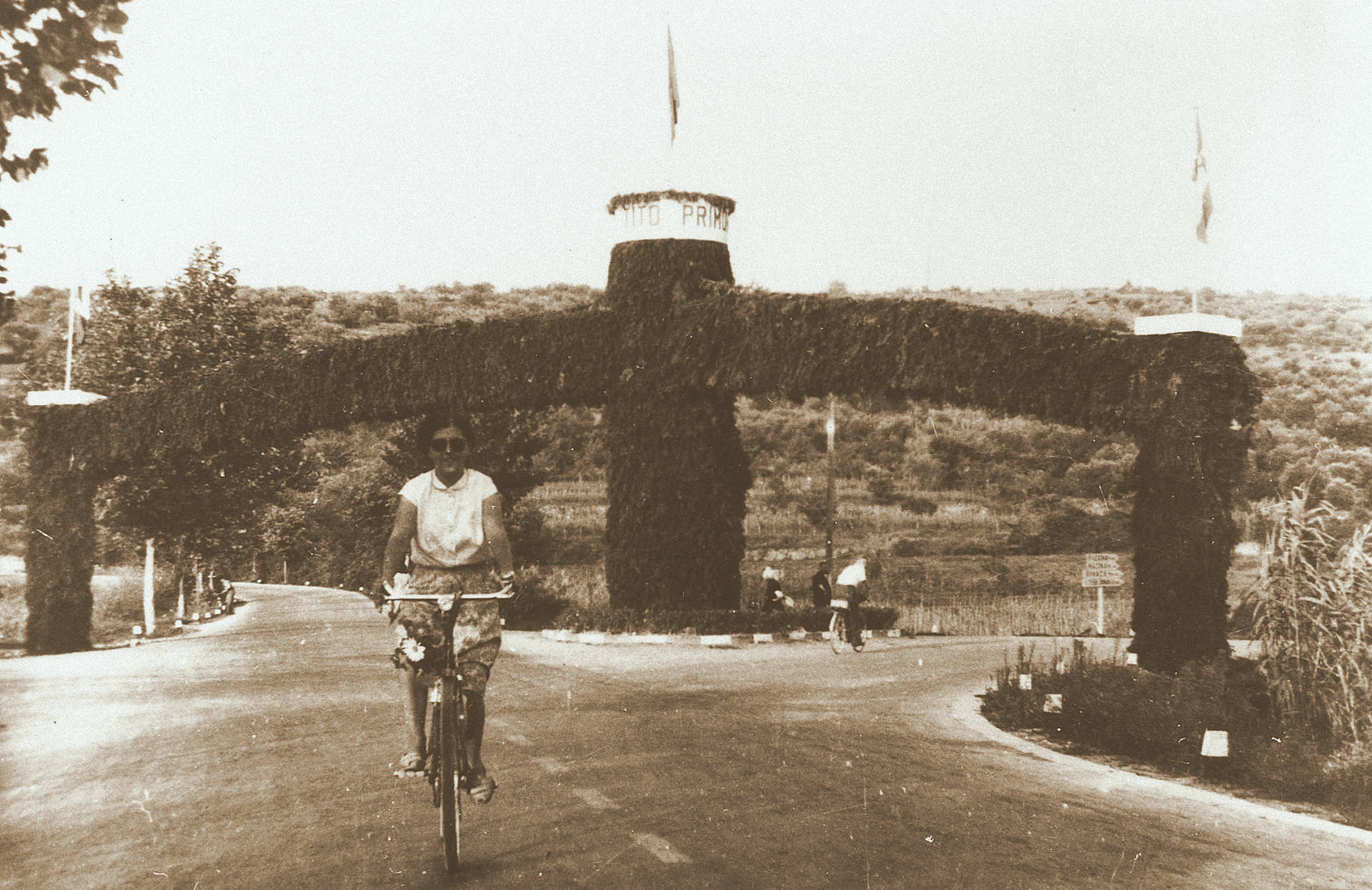 Bivje, september 1953.
Bivje, september 1953.
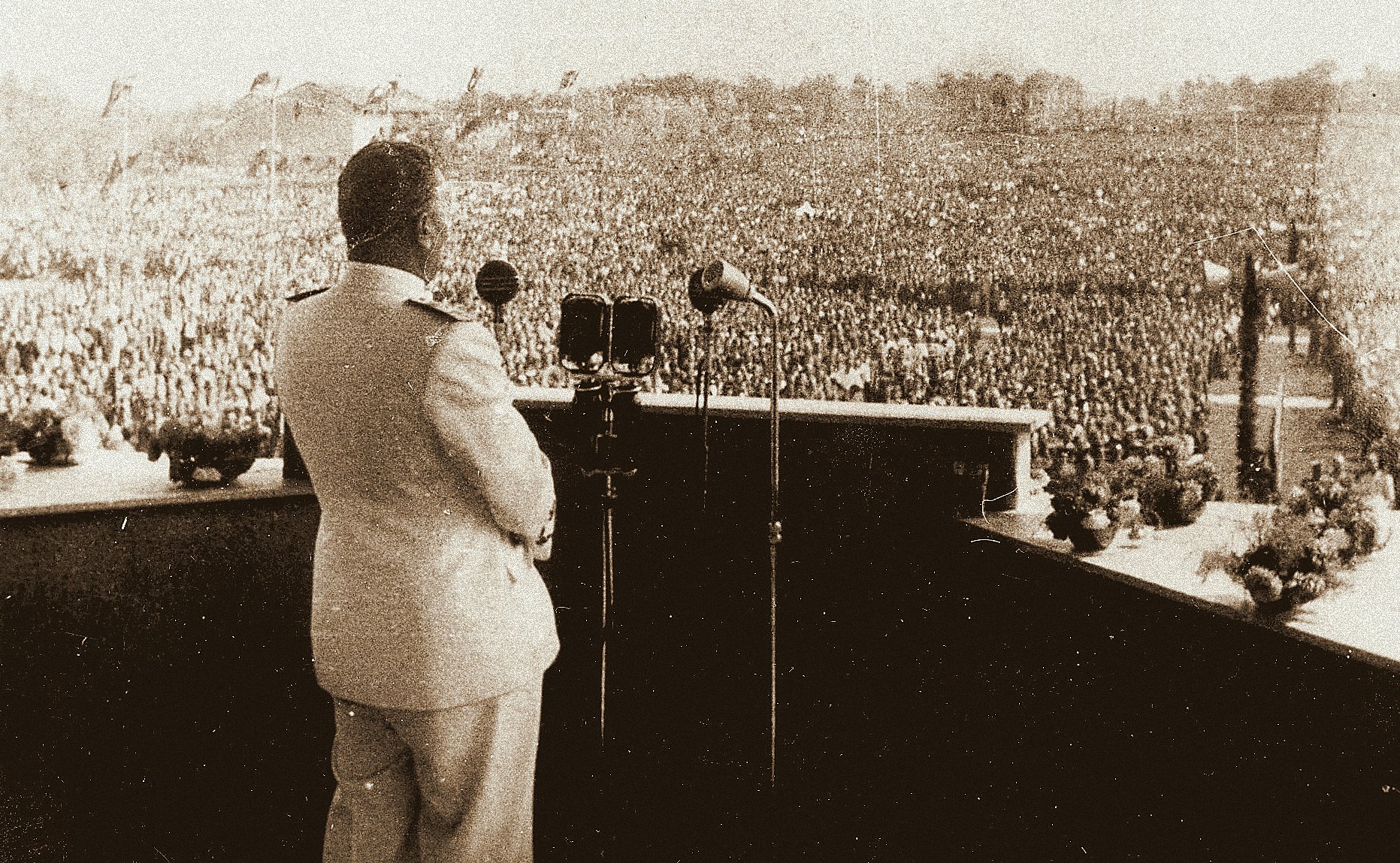 During the regional celebration at Okroglica on 6 September 1953 to mark the 10th anniversary of the establishment of the Primorska Brigades, Tito addressed the gathered multitude (around 300,000 people) on the Trieste question.
During the regional celebration at Okroglica on 6 September 1953 to mark the 10th anniversary of the establishment of the Primorska Brigades, Tito addressed the gathered multitude (around 300,000 people) on the Trieste question.
 The Allies’ declaration on 8 October 1953 that they were ceding Zone A to Italy prompted many individuals in Zone B and across Primorska to sign up as volunteers to defend Trieste. A volunteer brigade was established, with Franc Potočnik as its commander.
The Allies’ declaration on 8 October 1953 that they were ceding Zone A to Italy prompted many individuals in Zone B and across Primorska to sign up as volunteers to defend Trieste. A volunteer brigade was established, with Franc Potočnik as its commander.
 The Allies’ declaration on 8 October 1953 that they were ceding Zone A to Italy prompted many individuals in Zone B and across Primorska to sign up as volunteers to defend Trieste. A volunteer brigade was established, with Franc Potočnik as its commander.
The Allies’ declaration on 8 October 1953 that they were ceding Zone A to Italy prompted many individuals in Zone B and across Primorska to sign up as volunteers to defend Trieste. A volunteer brigade was established, with Franc Potočnik as its commander.

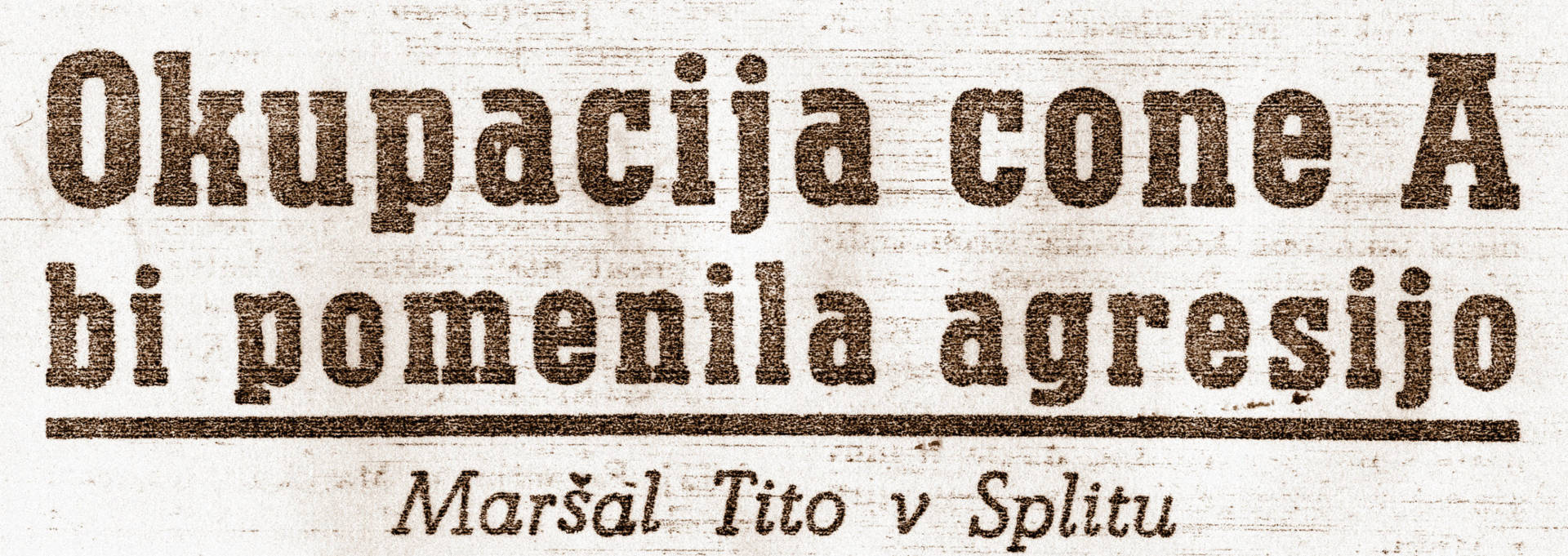
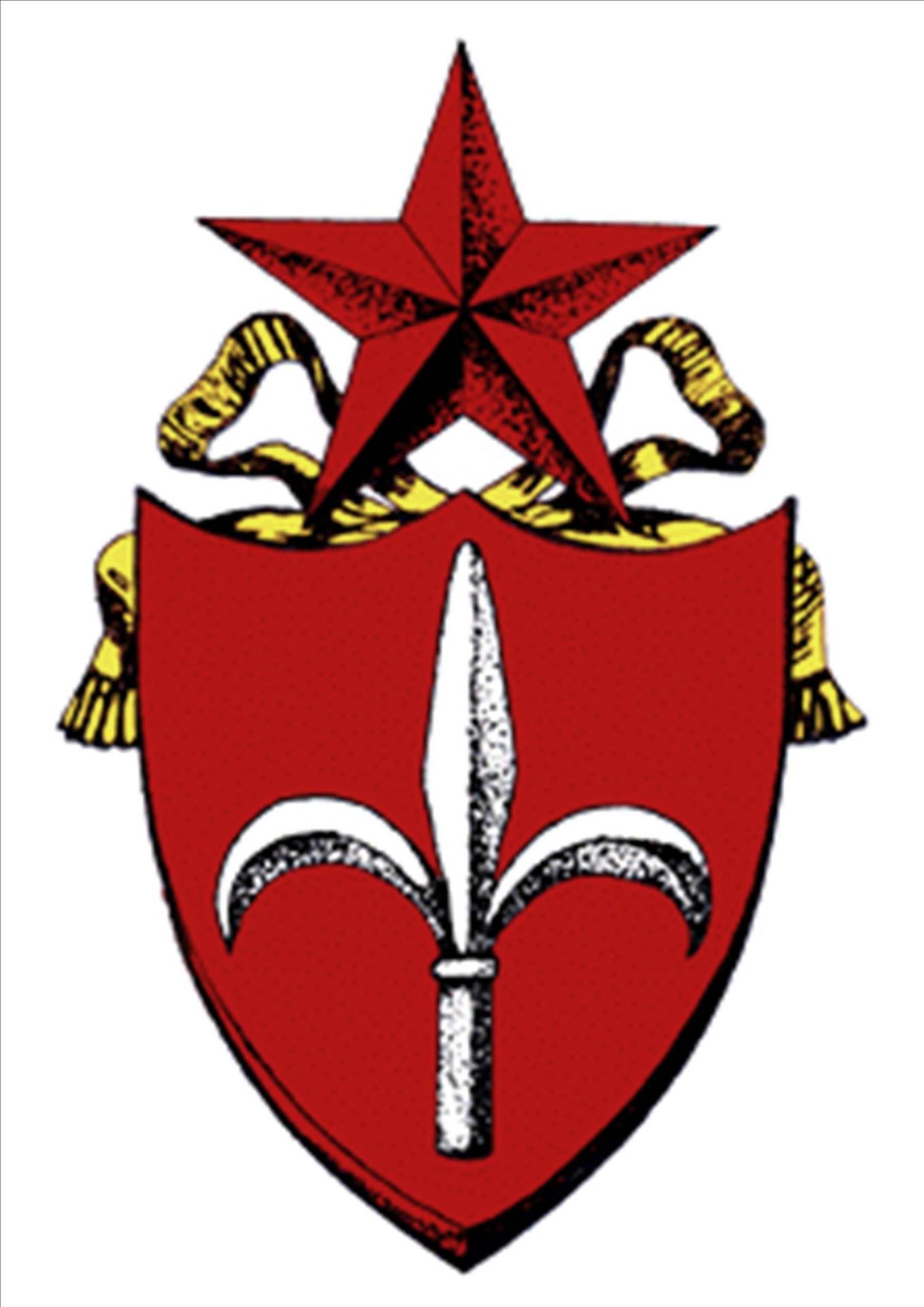
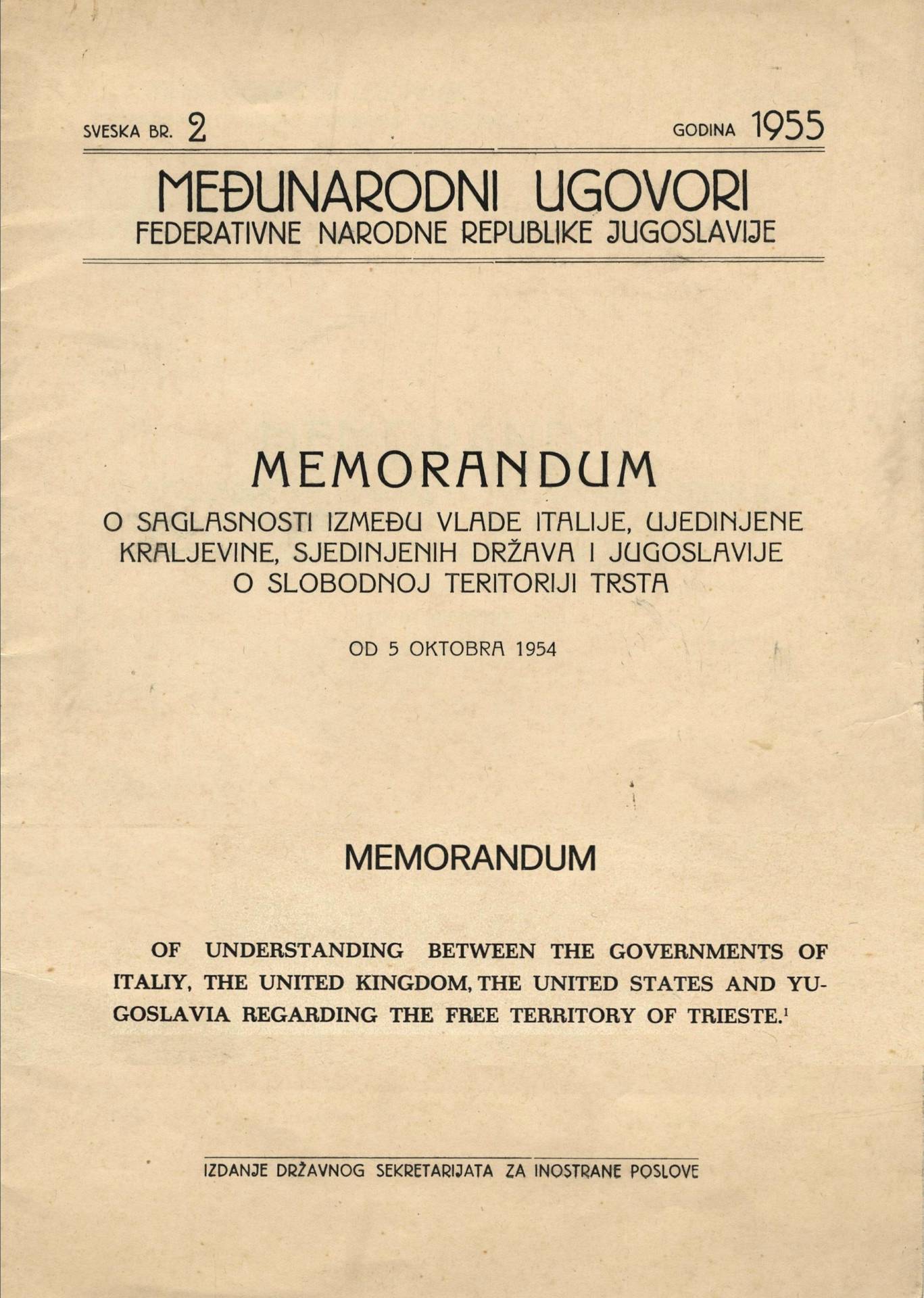
 Negotiations began in London in February 1954 and concluded on 5 October with the signing of the London Memorandum. The document was signed on behalf of Yugoslavia by Vladimir Velebit.
Negotiations began in London in February 1954 and concluded on 5 October with the signing of the London Memorandum. The document was signed on behalf of Yugoslavia by Vladimir Velebit.
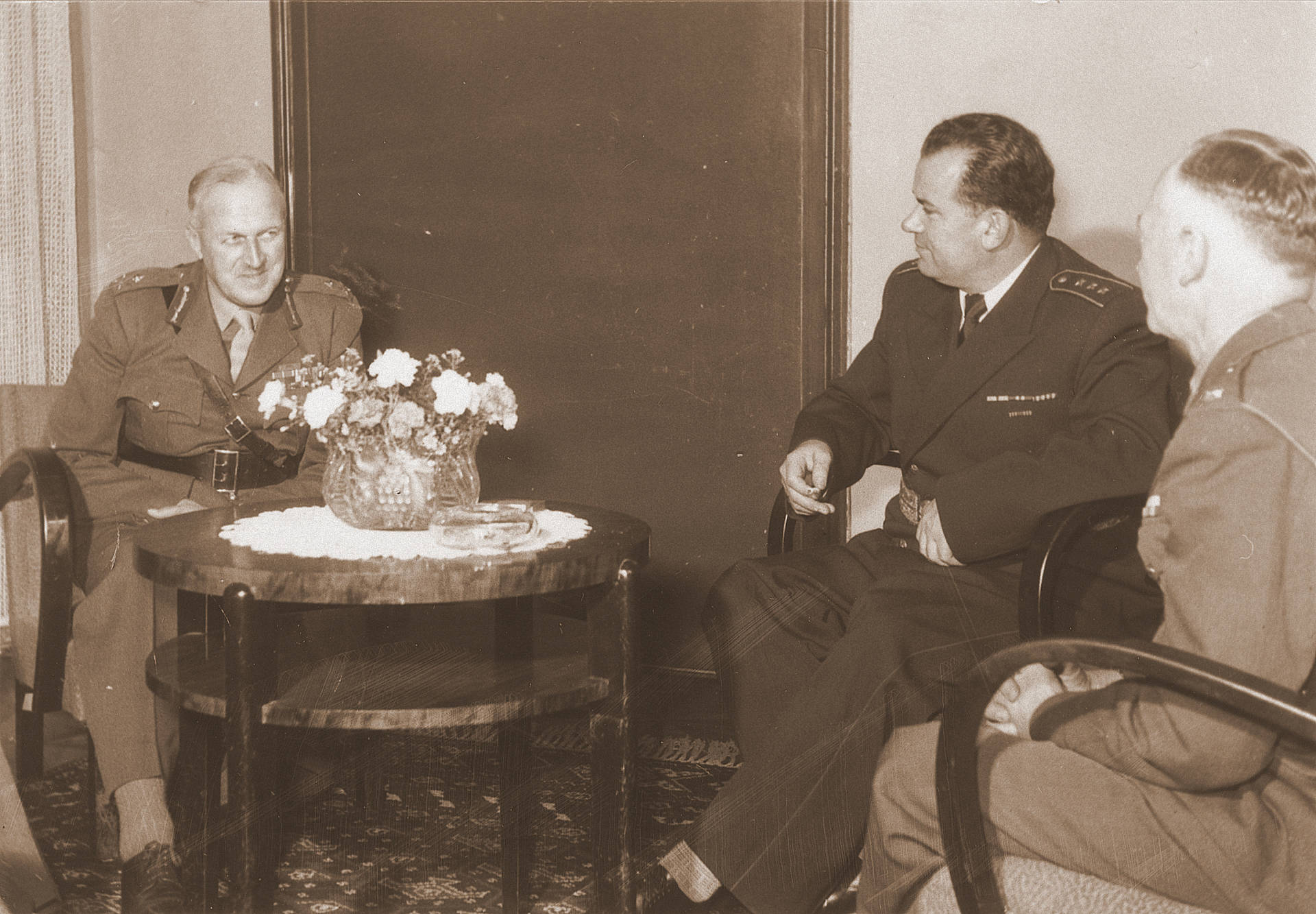 Koper, 21 October 1954 – farewell meeting of the two Military Governors of the FTT – Winterton (left) and Stamatović.
Koper, 21 October 1954 – farewell meeting of the two Military Governors of the FTT – Winterton (left) and Stamatović.

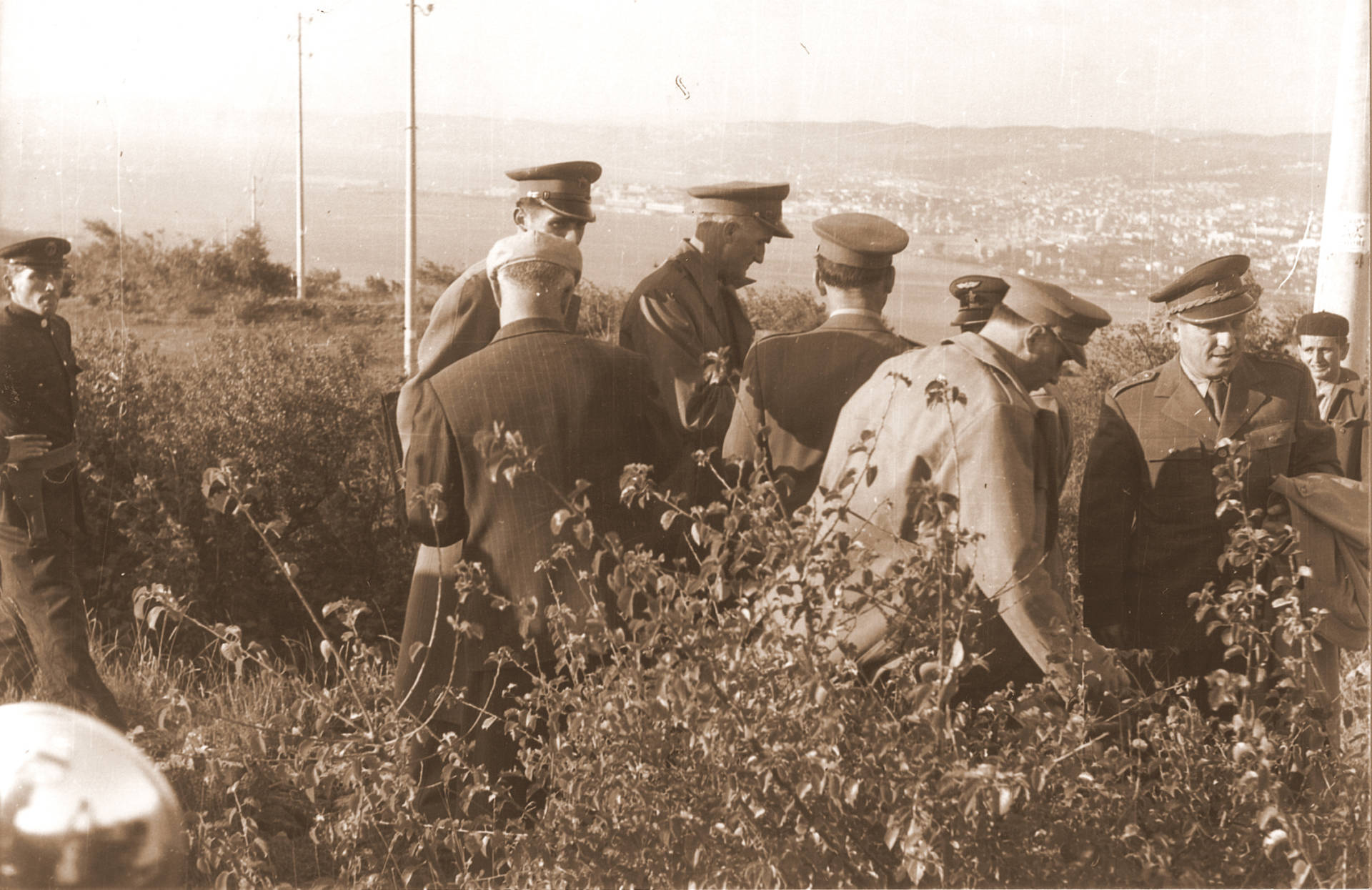 On 8 October the demarcation commission arrived in Škofije and began marking out the new border on the ground.
On 8 October the demarcation commission arrived in Škofije and began marking out the new border on the ground.
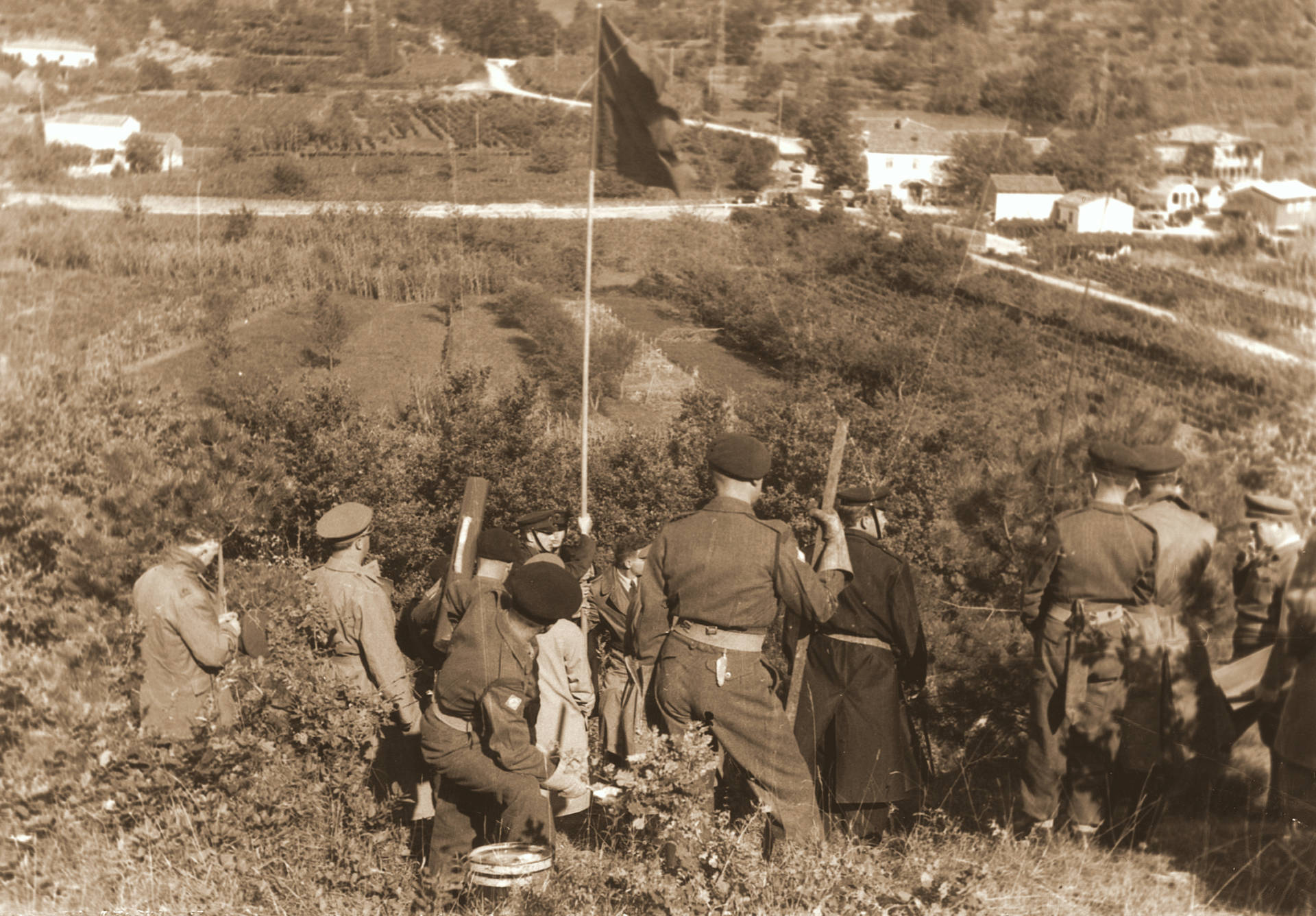 On 8 October the demarcation commission arrived in Škofije and began marking out the new border on the ground.
On 8 October the demarcation commission arrived in Škofije and began marking out the new border on the ground.
 Arrival of the Yugoslav garrison in Škofije.
Arrival of the Yugoslav garrison in Škofije.
 Arrival of the Yugoslav garrison in Škofije.
Arrival of the Yugoslav garrison in Škofije.
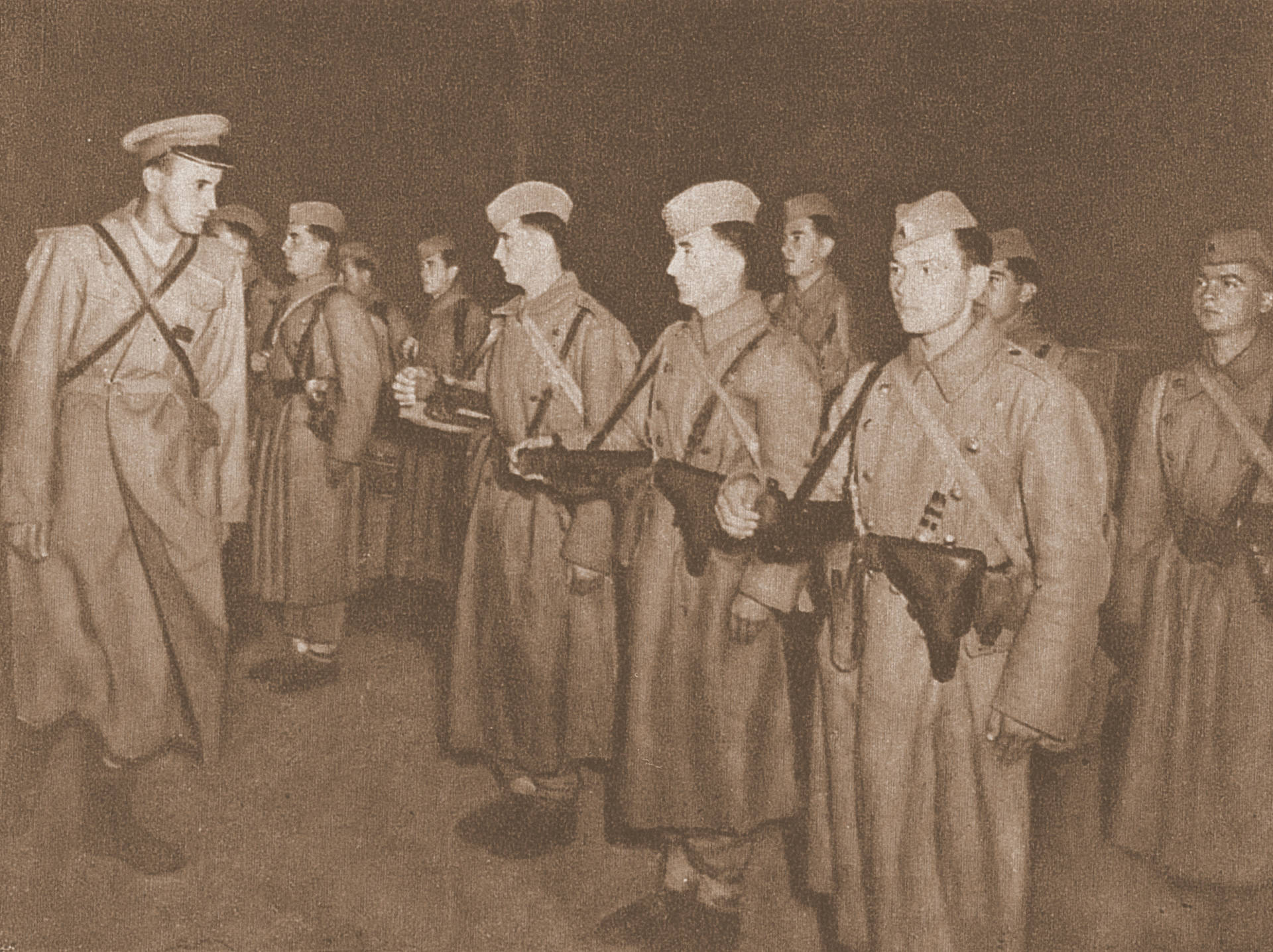 Soldiers about to set off to the new national border.
Soldiers about to set off to the new national border.
 Plavje – celebration of the region’s incorporation into Yugoslavia.
Plavje – celebration of the region’s incorporation into Yugoslavia.
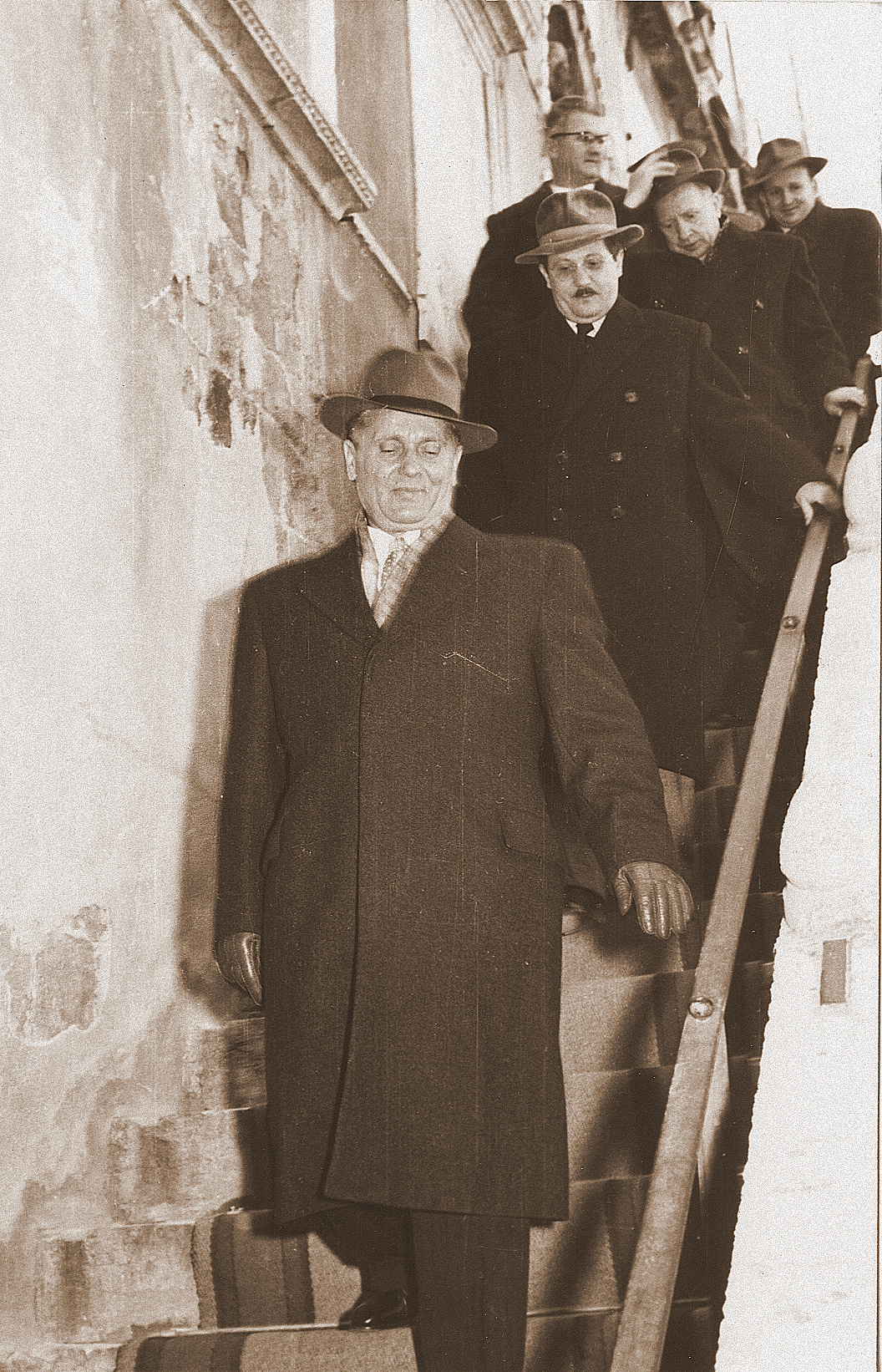 Yugoslav president Josip Broz Tito toured localities in the newly incorporated region in as early as November 1954.
Yugoslav president Josip Broz Tito toured localities in the newly incorporated region in as early as November 1954.
 Yugoslav president Josip Broz Tito toured localities in the newly incorporated region in as early as November 1954.
Yugoslav president Josip Broz Tito toured localities in the newly incorporated region in as early as November 1954.
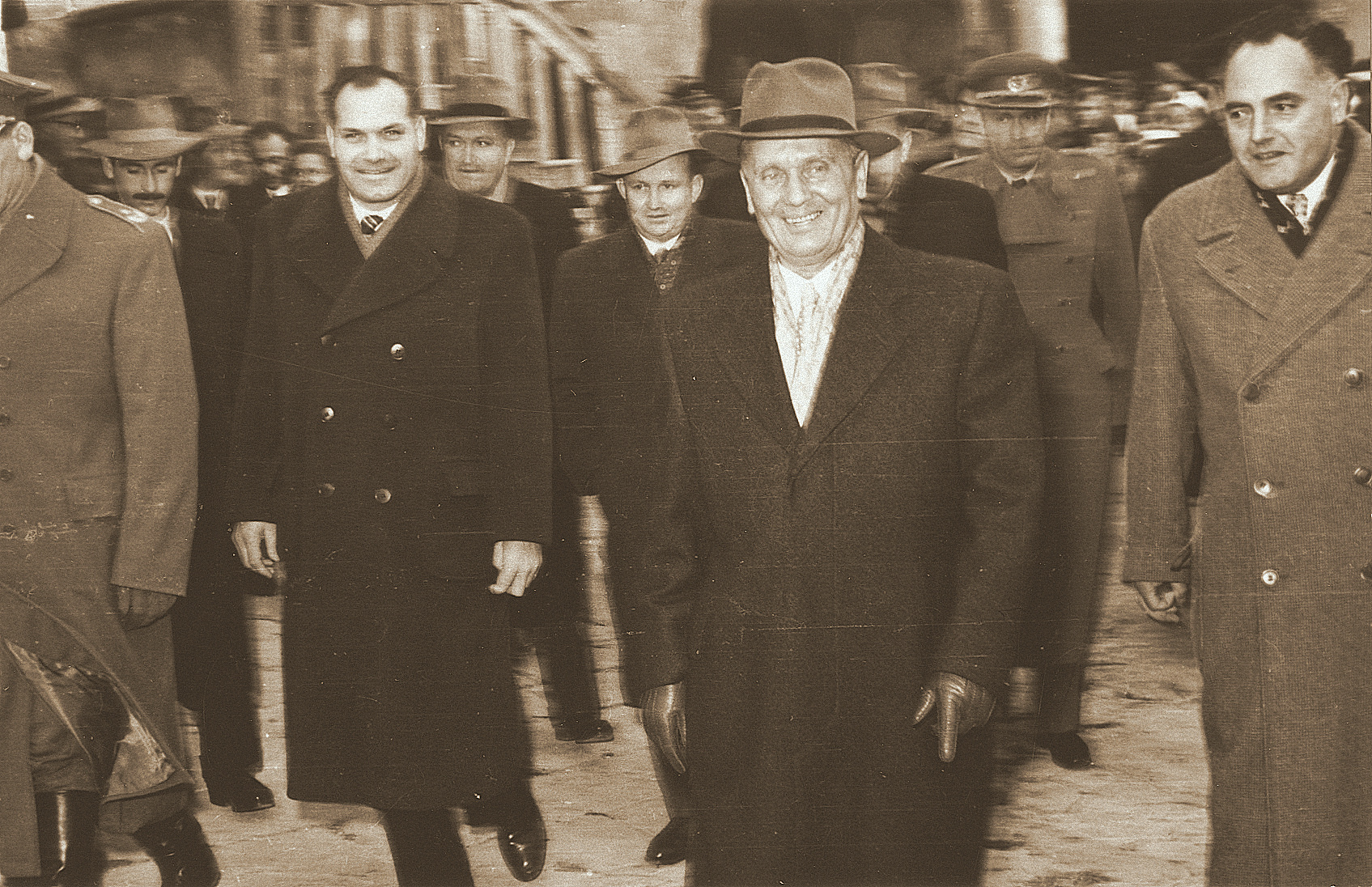 President Tito accompanied by Julij Beltram (left), the president of the Koper district and the former (wider) Istrian district, and Jože Borštnar, the delegate of the Slovene government in the military government of Zone B.
President Tito accompanied by Julij Beltram (left), the president of the Koper district and the former (wider) Istrian district, and Jože Borštnar, the delegate of the Slovene government in the military government of Zone B.
 President Tito meeting Istrian antifascists and activists of the Liberation Front.
President Tito meeting Istrian antifascists and activists of the Liberation Front.